Back in September, I published an article on my discovery of the 70-year-old undeveloped Leica cassette. It seemed appropriate to dub it “the Swiss roll”. Now, of course, this story has had worldwide attention and aroused a great deal of speculation. This follow-up article sticks to the facts. What do we know so far?
I want to start with a big thank you to all of our readers here and elsewhere for their interest in this story, which is, of course, truth rather than fiction. The objective of my original article was and still remains to trace the families of the people in the photos and to present them with prints. I have no other motive in respect of all of this. I am an amateur photographer and collector of old cameras and other photographilia as well as being a sometime author on those subjects and intend to remain so.
The account of the mysterious roll has attracted worldwide coverage with possibly over five million hits or reads on the likes of the BBC, CNN, London Times, Irish Times, New York Times and most particularly and, most importantly, in media in Switzerland, Germany and Italy.
We have had hundreds of observations and suggestions here and elsewhere, particularly on the Leica Forum, not only relating to the identity of the people but also about places, buildings, the car, the year and the season among many others.
The most important issue, the identification of the people, has brought dozens of suggestions, some rather wild. We have had every type of person suggested, including European royalty, half of Hollywood, politicians, military people, scientists and authors as well as great grandparents, grandparents, parents, uncles, aunts, cousins, brothers and sisters and even the folks next door.
We are working our way through these suggestions, and other information received, concentrating on the most likely leads. Still, to date, we do not have sufficient evidence to enable a confirmed identification. I would encourage anyone who has evidence, particularly of the photographic kind, to share it with us on Macfilos Mail — info@macfilos.com
This article is intended to share all the hard in-period evidence that we have to date. That must start with the roll of negatives in my possession. Those familiar with photographic film will be aware of the frame numbers which are on the film edge with the most well known being the numbers 1 to 36 on a standard roll of 35mm film. In this case, even though it is bulk film, the roll of Perutz negatives has numbers on the edge. In common with other films, I have seen, it runs 1, 1A, 2A and so on, with the A indicating the half frame. In this case, the A is directly beneath the frames, but I will use just the frame number in this article. For the sake of clarity
What I have done below is to set out the frames in the journey stages and I am also matching them with modern Google maps to show the approximate locations where the photos were taken.
In many cases, we know the precise locations where these photographs were taken, even down to seats which are still there seventy years later. However, showing those on exact maps would greatly expand the size of this article without adding substantially to the narrative or the identification process.
The complete road journey would be about 546 km on modern roads and was probably longer in the early 1950s, with fewer direct road networks. This does not alter the likely validity of the stages, which are indicated by the sequence of the photos on the roll of negatives.
Finally, there is no image on frame 1 which may have been lost in the initial winding on and the story starts with Frame 2. The frame numbers show the exact sequence in which the photos were taken.
So let’s start the trip with our mystery couple, the little dachshund, the BMW 315 and possible a 1935 Leica Model III
First stage
Bahnhofplatz Zürich to Hotel Tamina, Bad Ragaz – 98 Km – Frames 2,3, 4

This has been the most discussed frame, particularly in respect of a possible date for the trip. It is taken in Bahnhofplatz in Zürich, and it shows the young woman with the dachshund talking to someone in the BMW 315, who is most likely the older woman seen in frame 3 which follows.
As regards the date issue, I could do a fifty-page article on this, which space and time do not permit. But, based on a number of features in this photo and particularly by cross-reference to these photos of the reception for Hugo Koblet the Swiss winner of the 1950 Giro d’Italia cycle race which ended on 13 June 1950, the photo in Frame 2 could have been taken in the Spring of 1950
I won’t go into this in detail, but a lot of the features in the location [which are shown in these Getty Images photos] match those in Frame 2. Still, some features are not seen as many of the photos were taken from the balcony of the hotel opposite the station. Given the weather shown in the later frames, we could be talking about Spring or late Spring of 1950 for the trip. I am not going any further with this for the present because (a) it is not totally relevant to identifying the people at present and (b) we could be here all night discussing it.
This frame shows the young woman with the dachshund standing with an older woman outside the station (Bahnhof) in Zürich. It was omitted from the original article because of the obvious light damage. The older woman could be a relative of either the man or the woman. She might have arrived in the car, or she might have also arrived by train, possibly with the young woman. There are other possibilities, of course, particularly as Bahnhofplatz is a regular meeting place in Zürich
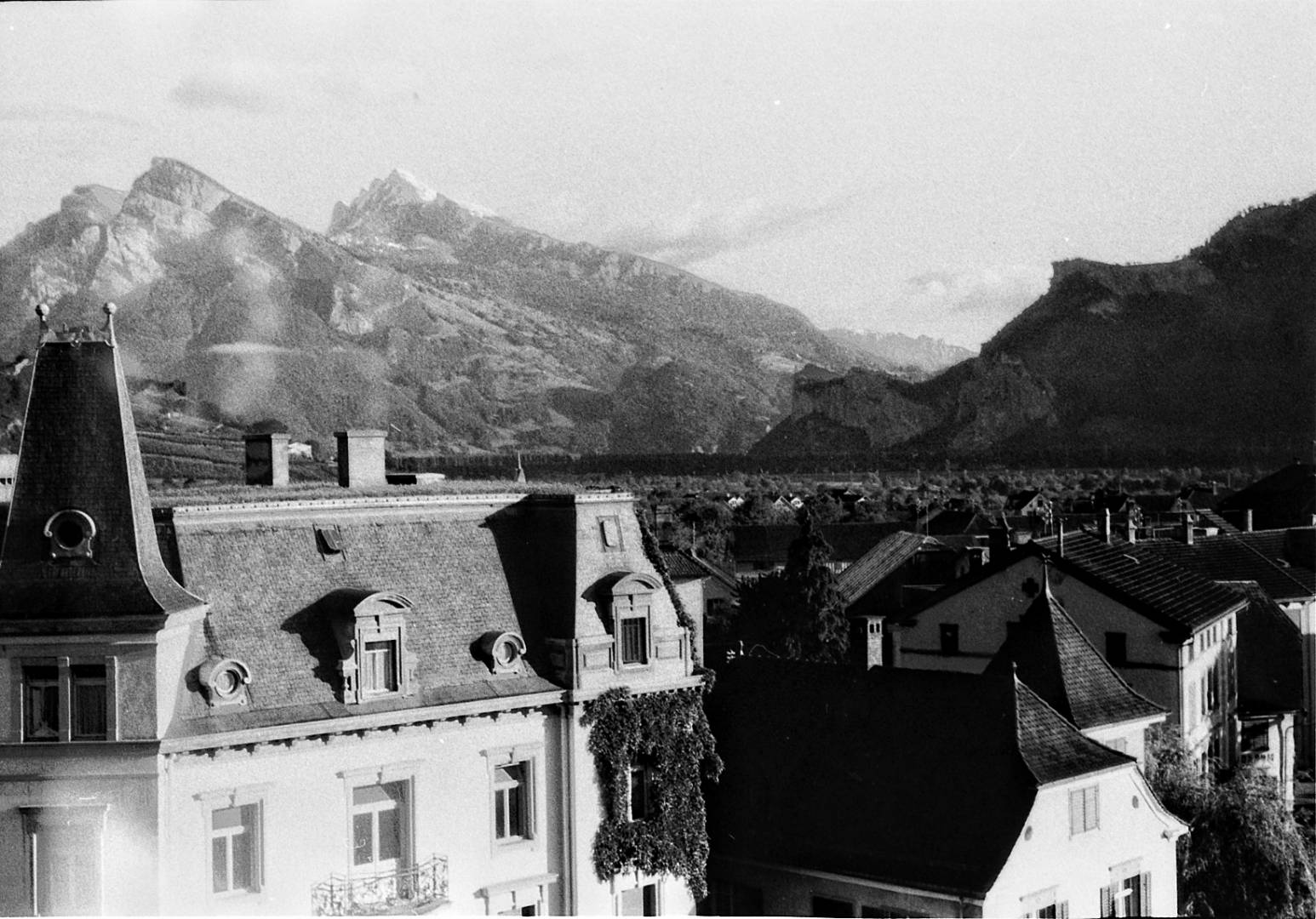
Here we see the old Town Hall in Bad Ragaz and mountains beyond. The town hall no longer exists, but it appears in aerial photographs from 1942. This frame seems to have been taken from the fourth floor of the Tamina Hotel, which was just opposite the Town Hall. The hotel is still there today. Some of our readers have contacted it, but it has no records of visitors going back as far as the fifties.
A summary map, using a 2020 Google Map, of this stage is shown here, and a similar map will be shown at the end of the description of each of the subsequent stages of the trip.
Second stage
Hotel Tamina, Bad Ragaz to St Moritz – 104 km, Frames 5, 6, 7, 8, 9

This frame shows the BMW cabriolet near to the Julier Hospiz, La Veduta, on the Julier Pass. The car is pointing in the direction of travel. While the road has changed, the establishment is still there today and is recognisable down to the rocky bank on the right with the flag/communications pole on top of it.
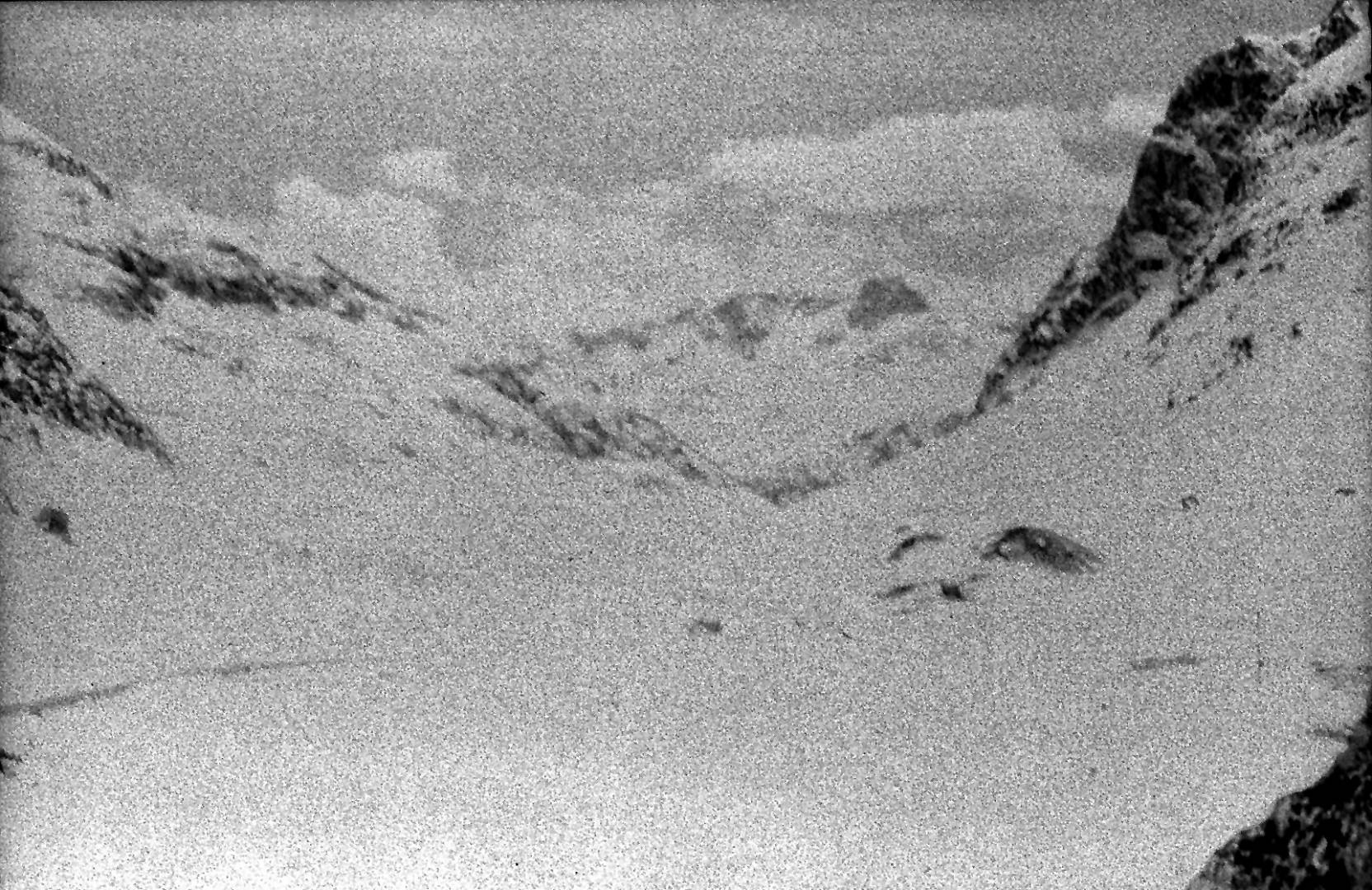
This grainy picture (the negatives vary in quality possible due to light leaks when the cassette was opened, by myself and, probably, others) shows a view over the snow-covered mountains from the Julier Pass.
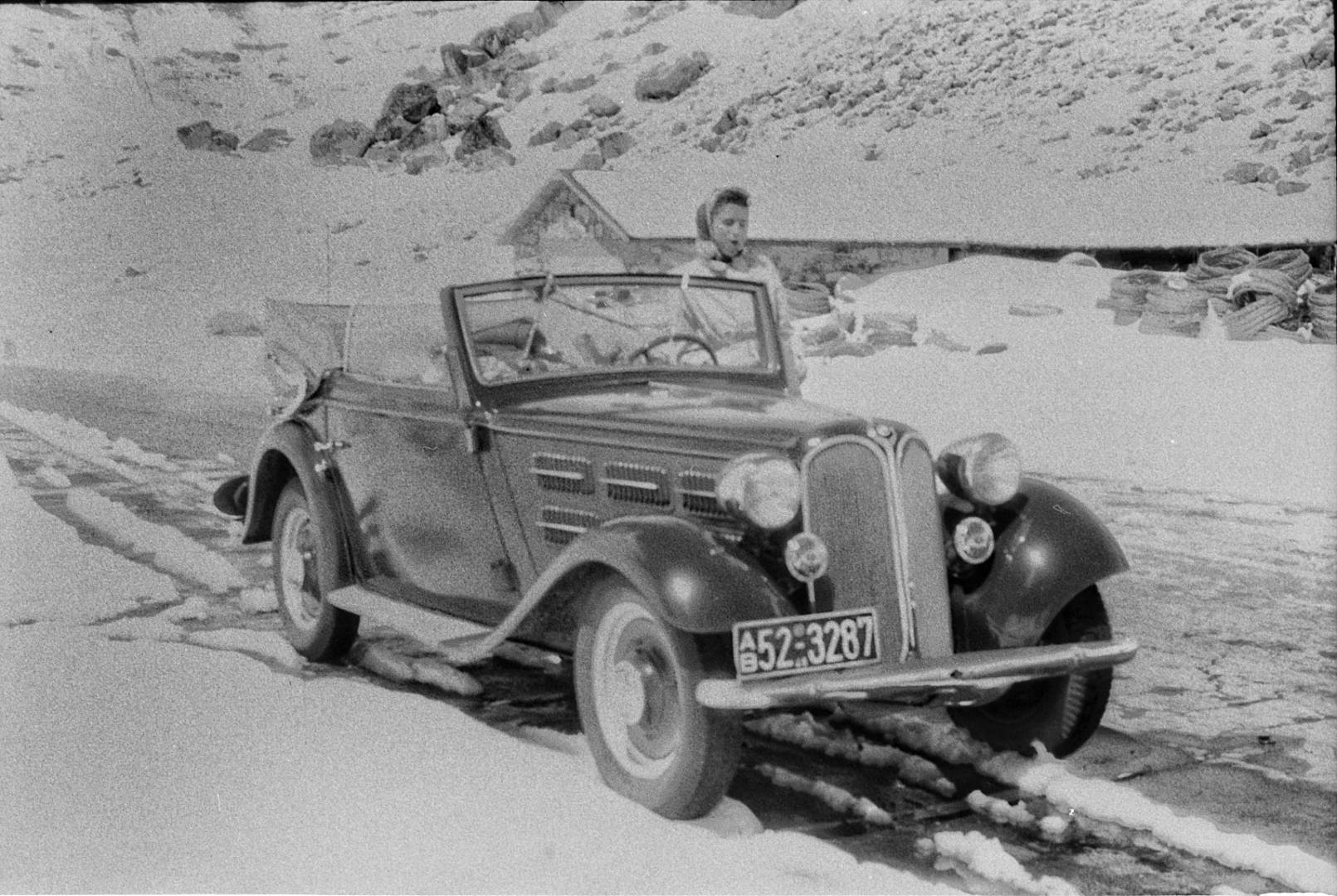
This frame shows the young woman beside the BMW and probably holding onto the dog, on the Julier Pass, a few kilometres from La Veduta. The low building behind, which may be for equipment or animals or feed, is still there but is not as long as it was the fifties. The rear of the building appears to have been of wooden construction at the time that the photo was taken.
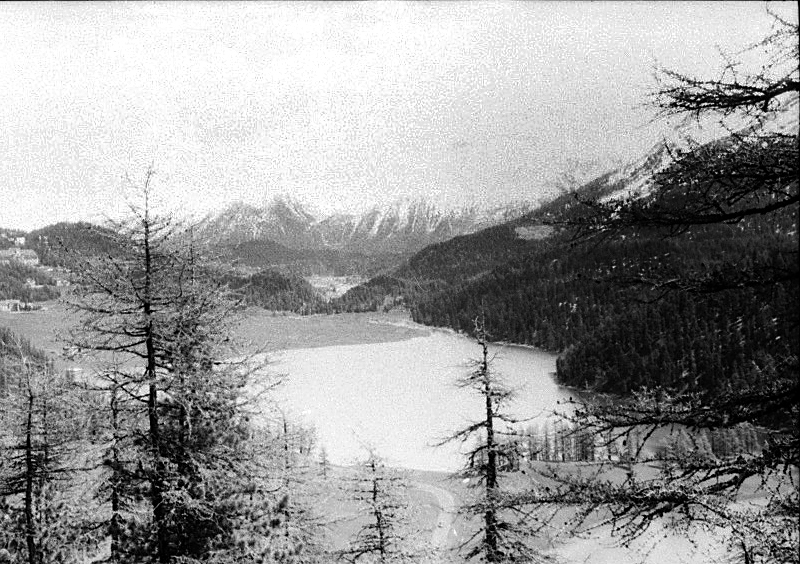
This frame seems to have been taken from the road on the way into St Moritz. There are many such scenes to be observed from that road today, but in most places, the trees are considerably higher than they were when the pictures were taken.
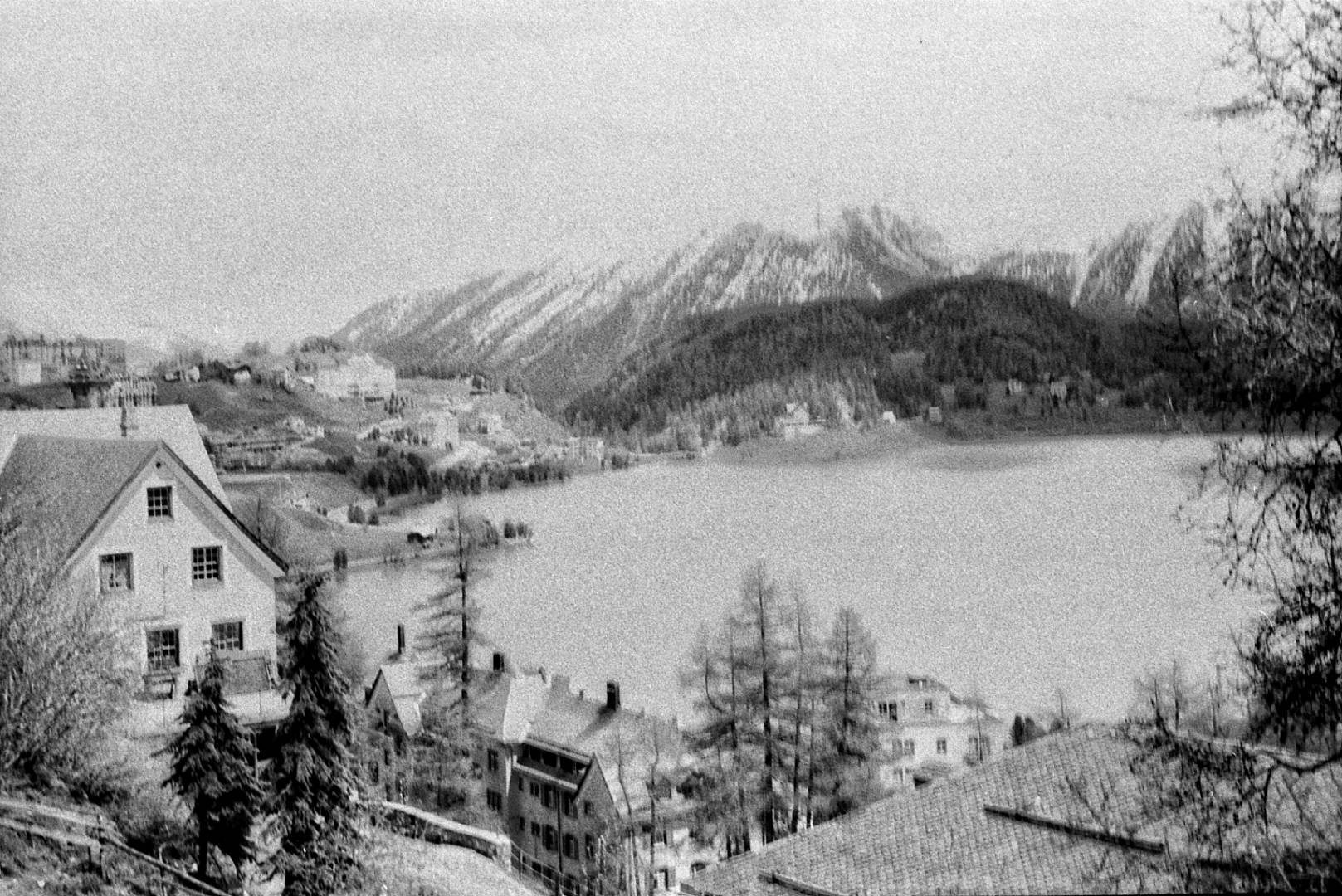
This has been identified as St Moritz, and many of the same buildings are still there today. There is some debate about whether this was taken from a hotel and whether the couple might have spent a night there.
A summary Map of this stage is shown here:
Third stage
St Moritz to Menaggio– 96.8 Km – Frames 10, 11, 12, and 13
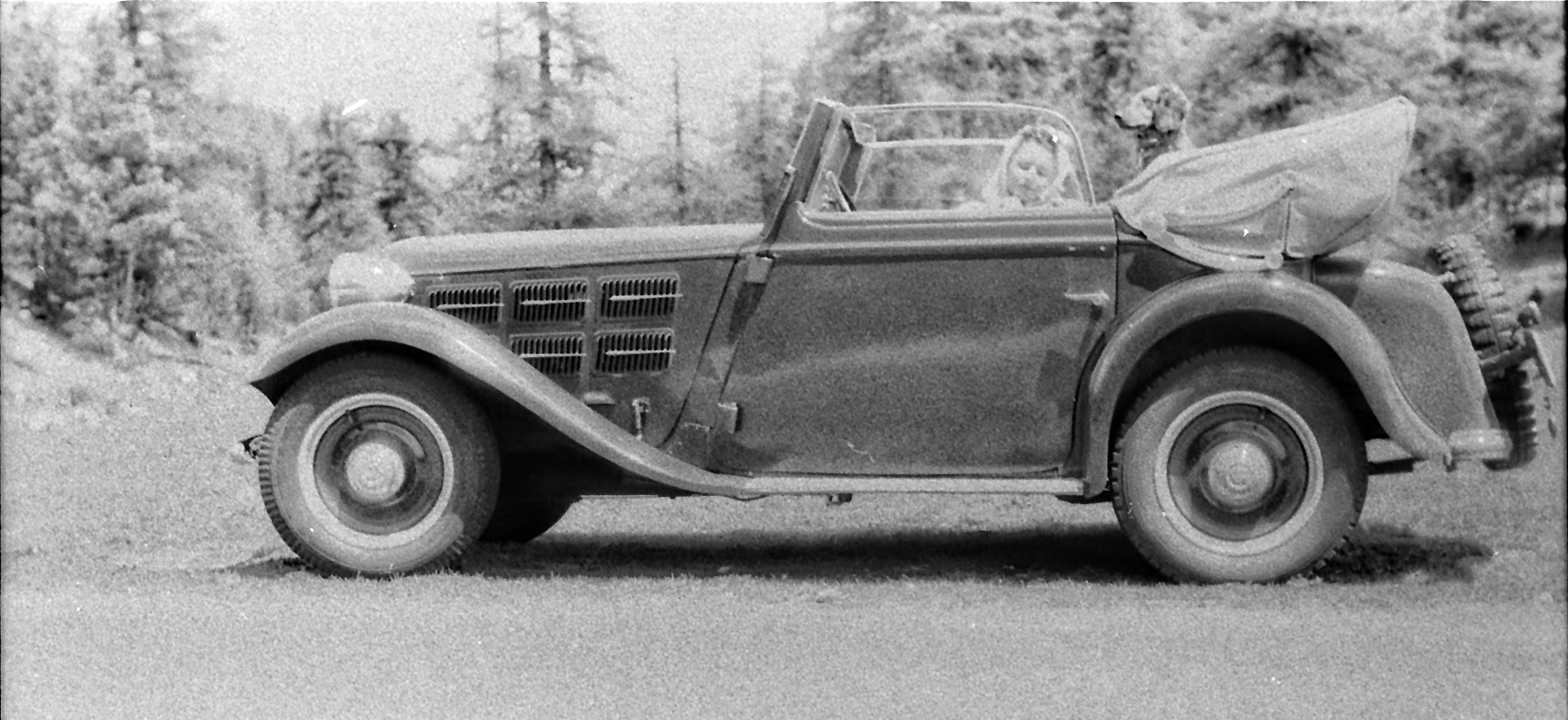
Eagle-eyed readers may have spotted a pattern emerging of journey stages that were about 100 km long. Some have speculated about whether this journey was all undertaken on the same day, but we can only speculate about this. Certainly, the couple is likely to have been in a hotel in Bad Ragaz, and they also spent quite some time around Lake Como. This might point to some nights away, possibly two or three overall.
Moving on to this photo, it shows the BMW with the woman sitting inside it. The man seems to have been quite proud of this car, but whether this was because he owned it or just had a loan of it can be debated. People rarely photograph their cars when they have had them for some years. On the other hand, he might have wanted to or have been asked to photograph the young woman inside the car. We are getting away from facts and moving into some speculation here, of course.
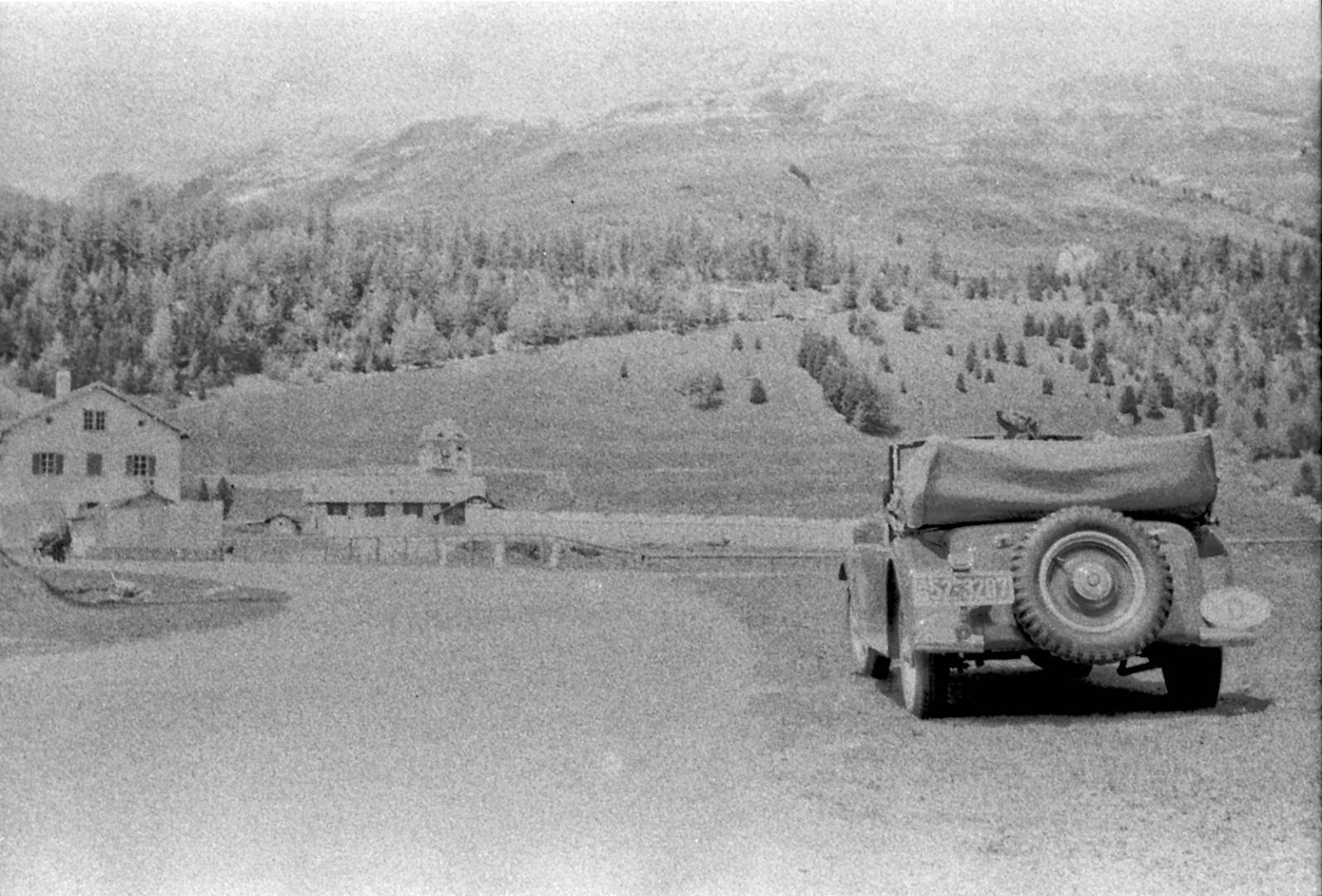
This frame shows the car stopped on the road from St Moritz to Menaggio. It may have been for a short meal break. The building on the left seems to have outhouses and may be a farm.
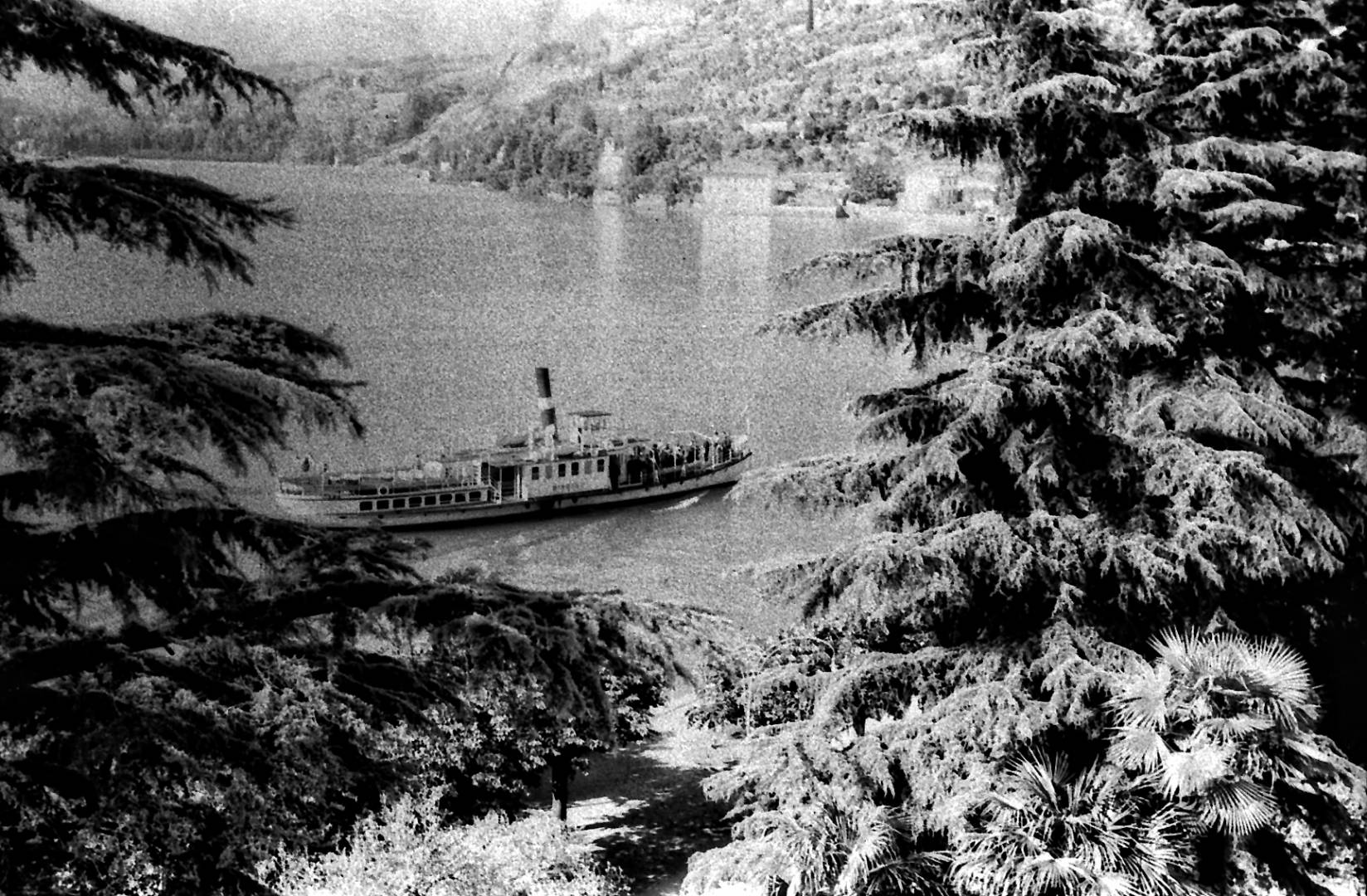
The above frame shows a Como steamer (possibly the Bisbino which ceased passenger service in 1952) from above through some trees which seems to indicate that it was taken from Menaggio. Reader Chris Rodgers has confirmed that because of the point of view and the height that this must have been taken from the Grand Hotel Victoria and it is possible that the couple might have stayed there. He has optimistically written to the hotel about this seventy years later, and he is waiting for a reply. I am really grateful to Chris for his information about the location.
Below is a mountain view above the same location in Menaggio as for frame 12.
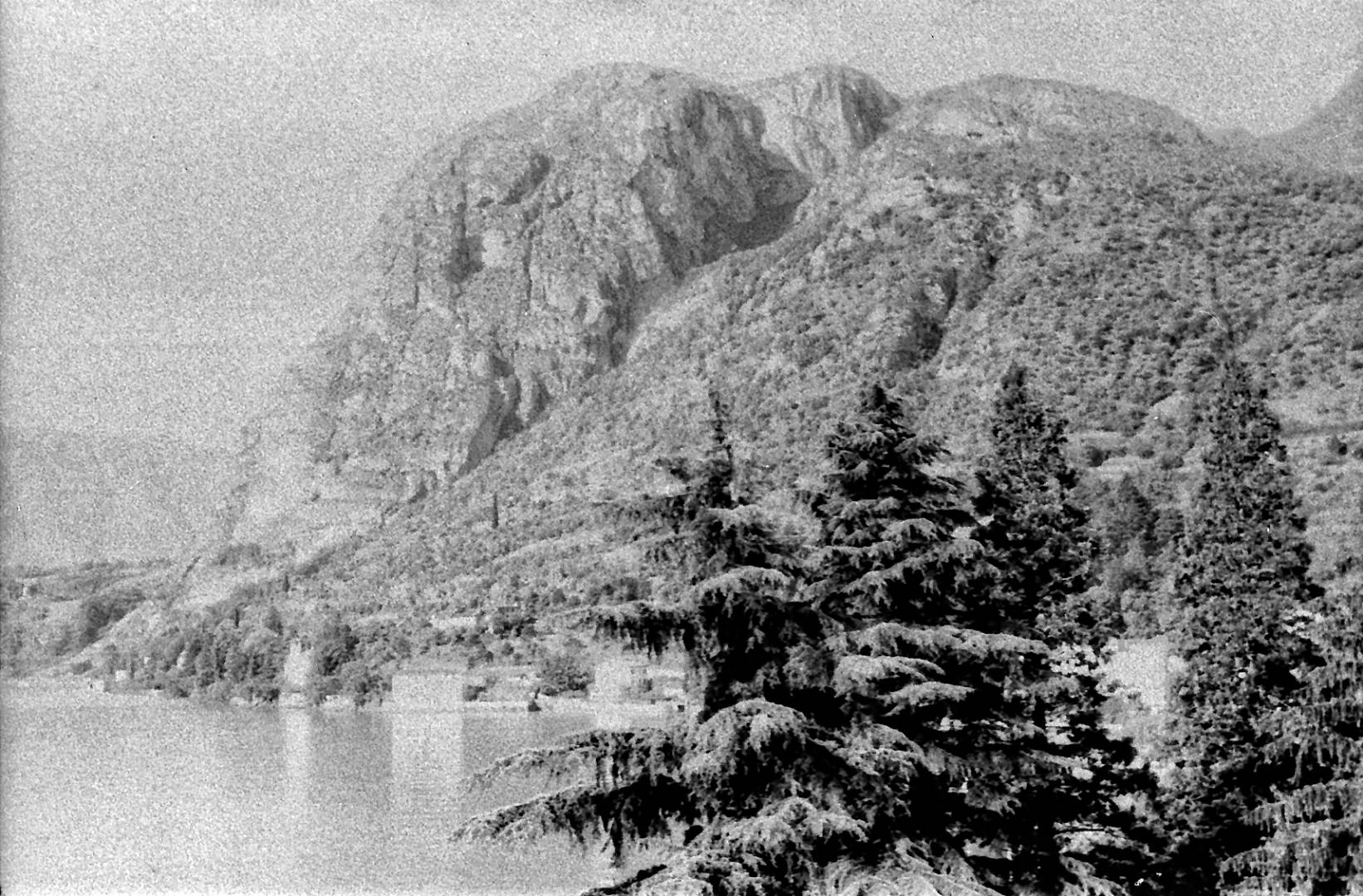
This is the map for stage three of the trip:
Fourth stage
Day trip by boat – Menaggio – Bellagio — Menaggio – no driving distance – about 12 km by boat return – Frames 14, 15, 16, 17, 18, 19

There is no sign of the car in Bellagio on the negatives. The trip across the lake by boat from Menaggio to Bellagio is considerably shorter than the drive around, so I am assuming that the couple made a day trip to Bellagio by boat.
This frame (which is my favourite from the whole series) shows a seat on the lakefront in Menaggio and trees which are still there on the lakeside walk today. A steamer (possibly the Bisbino) can be seen and some mountains behind. I needed to do considerable post-scan work to bring up some of the steamer and background detail in this photo, the content of which would be worthy of some of the prewar black and white film master photographers.
I should mention the steamer coming into the frame from the left ‘under the trees’ as one of the details which makes this photo stand out for me. I did not create or recreate this photo; I was just a repairman. What is surprising, though, is that there are no photos taken on the boat in either direction, but those were the days before spray and display photography.
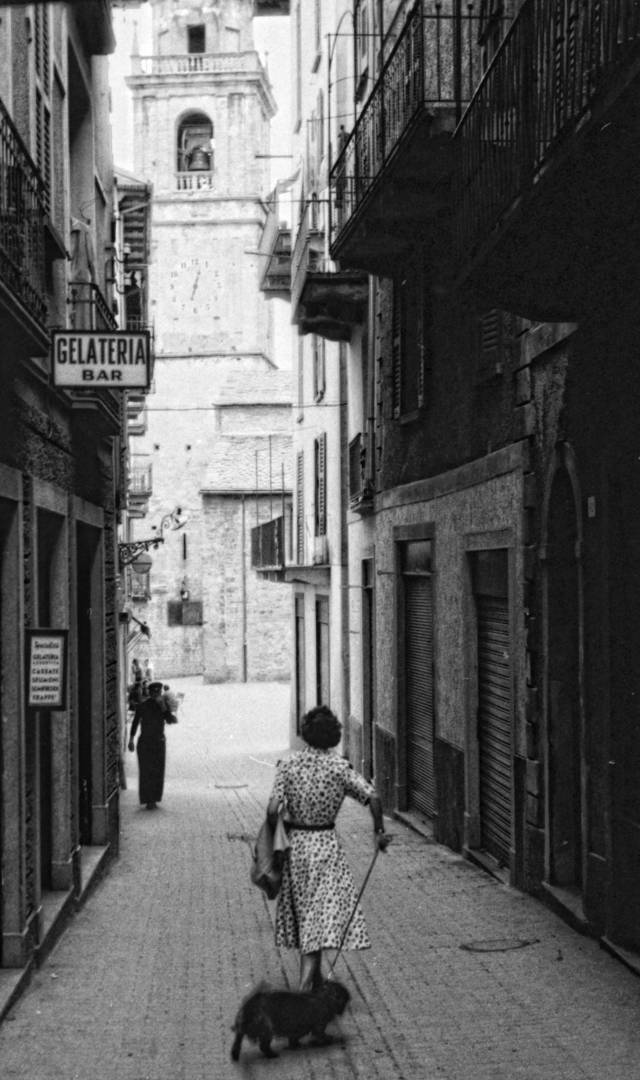
Here is the familiar street scene from my original article with the Basilica St Giacomo at the end. The street, Via Giuseppe Garibaldi, has hardly changed in seventy years and some of the shutters and railings still look the same as the following composite photo shows.
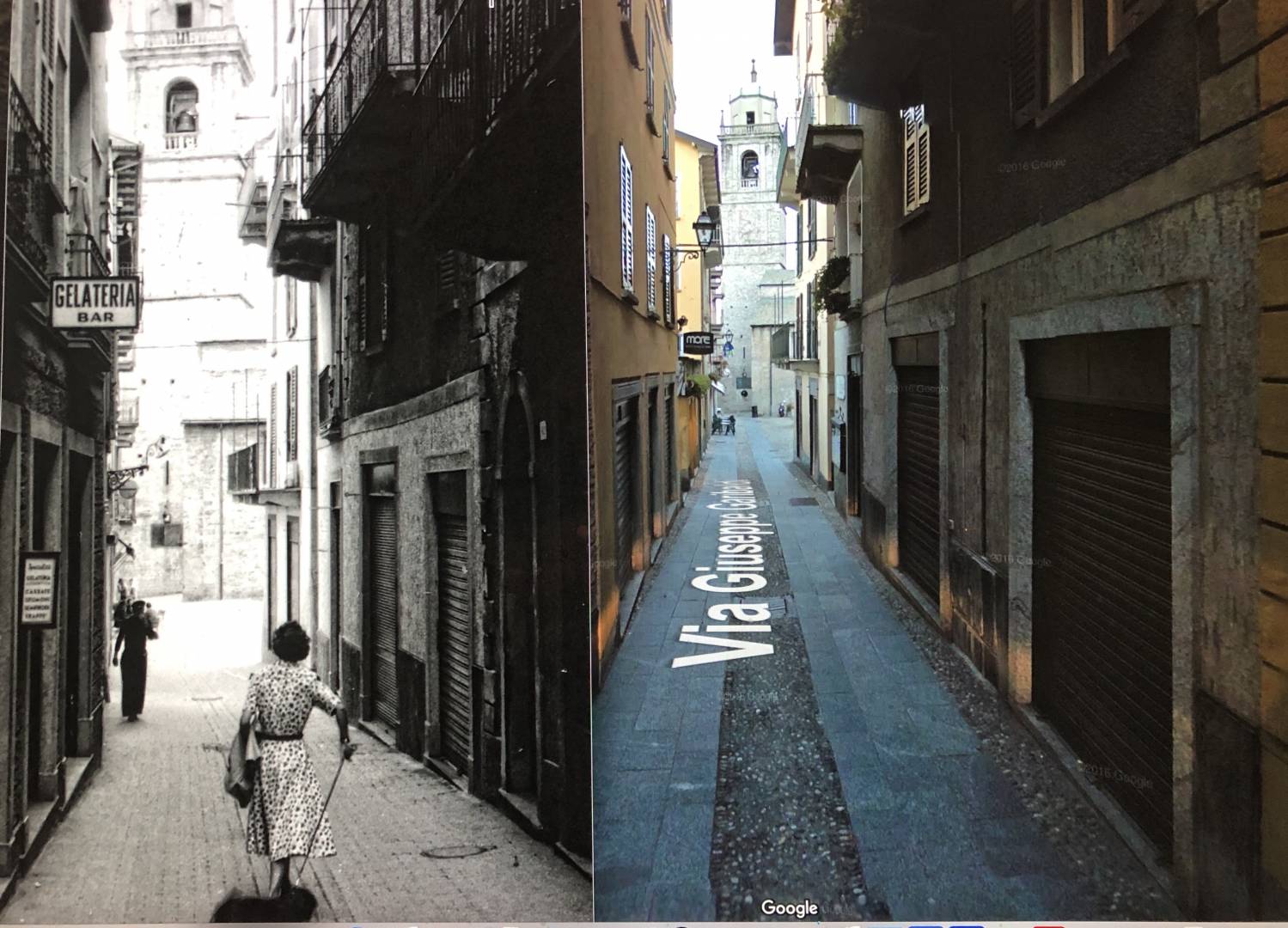
The most obvious change is the sign for the Gelateria bar.
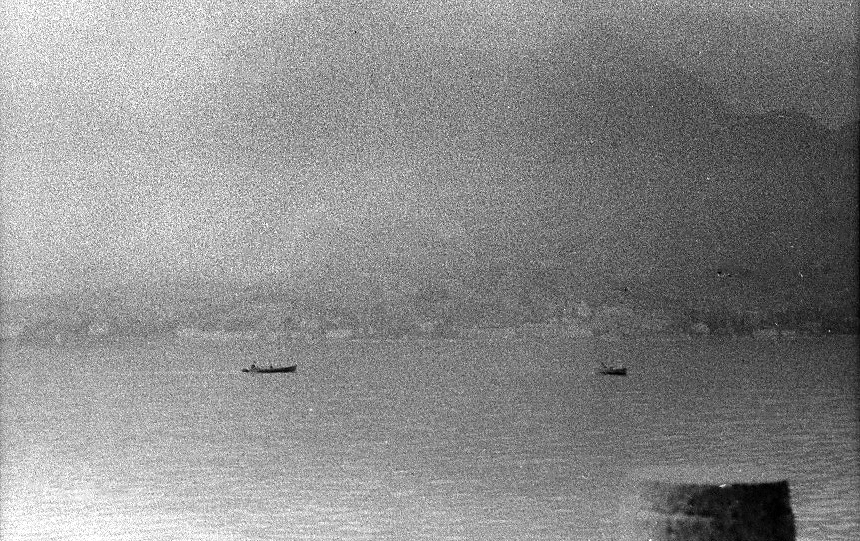
This frame has not been seen before and it is an overexposed view of the lake, looking towards Menaggio. It appears to have been taken along the lakefront in Bellagio. I had quite a bit of work to bring up any detail at all in this.
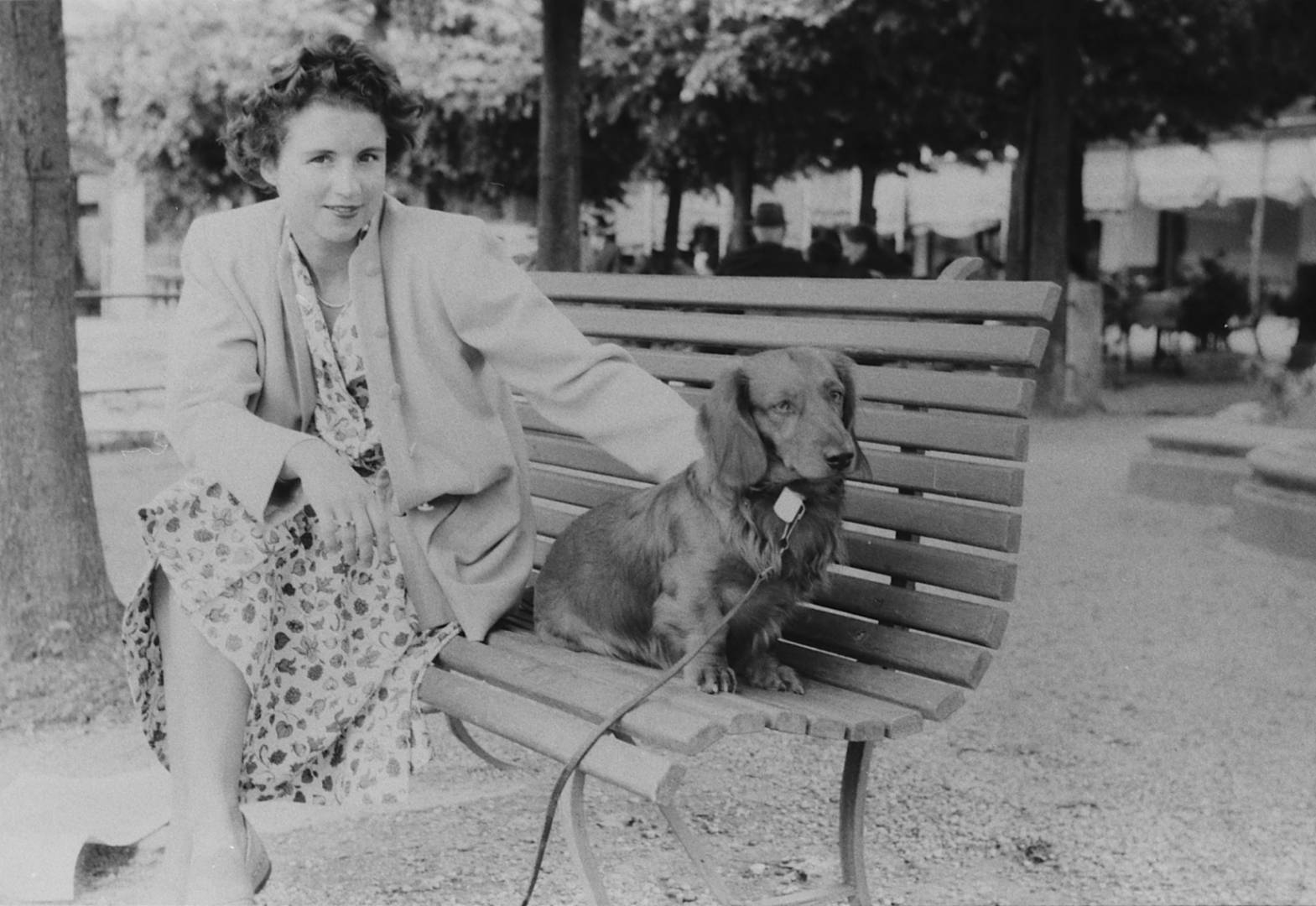
This is also a familiar scene from the original article. We have since discovered that this seat is still in the same place as it was in the early 1950s. The same seats under the trees behind are also still there.

This frame shows the man for the first and only time. The couple seems to have had a meal in Bellagio before making the return boat trip to Menaggio.
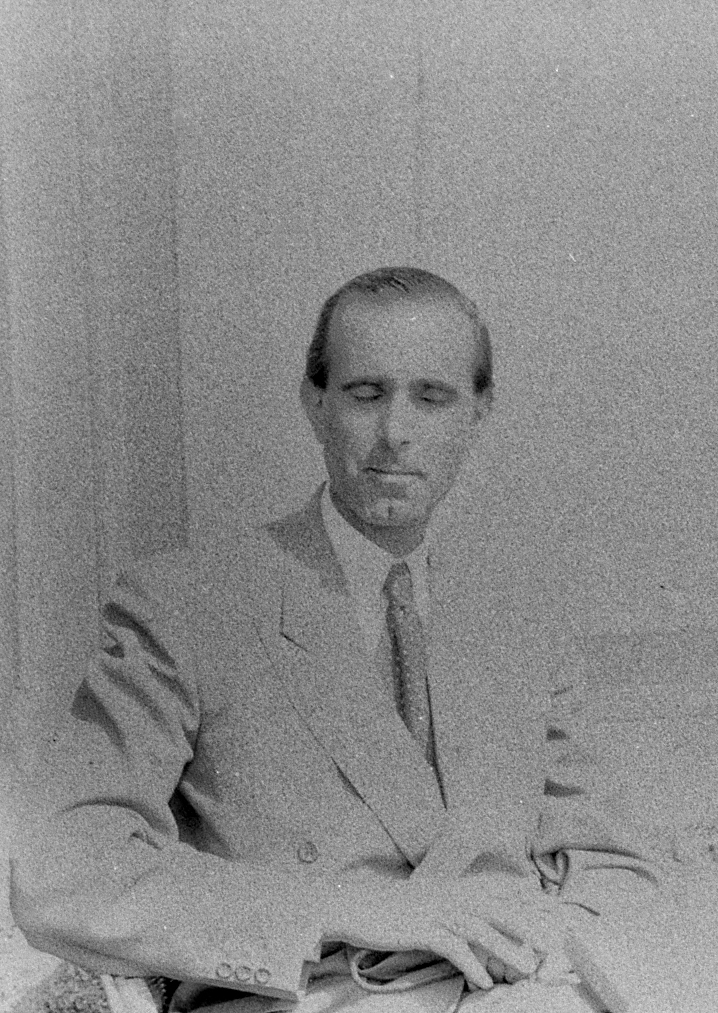
This is the crop from the full-frame shown above to show the man more closely. He was very much overexposed on the negative, and I had to do a lot of work to bring out his features; hence this is very grainy.
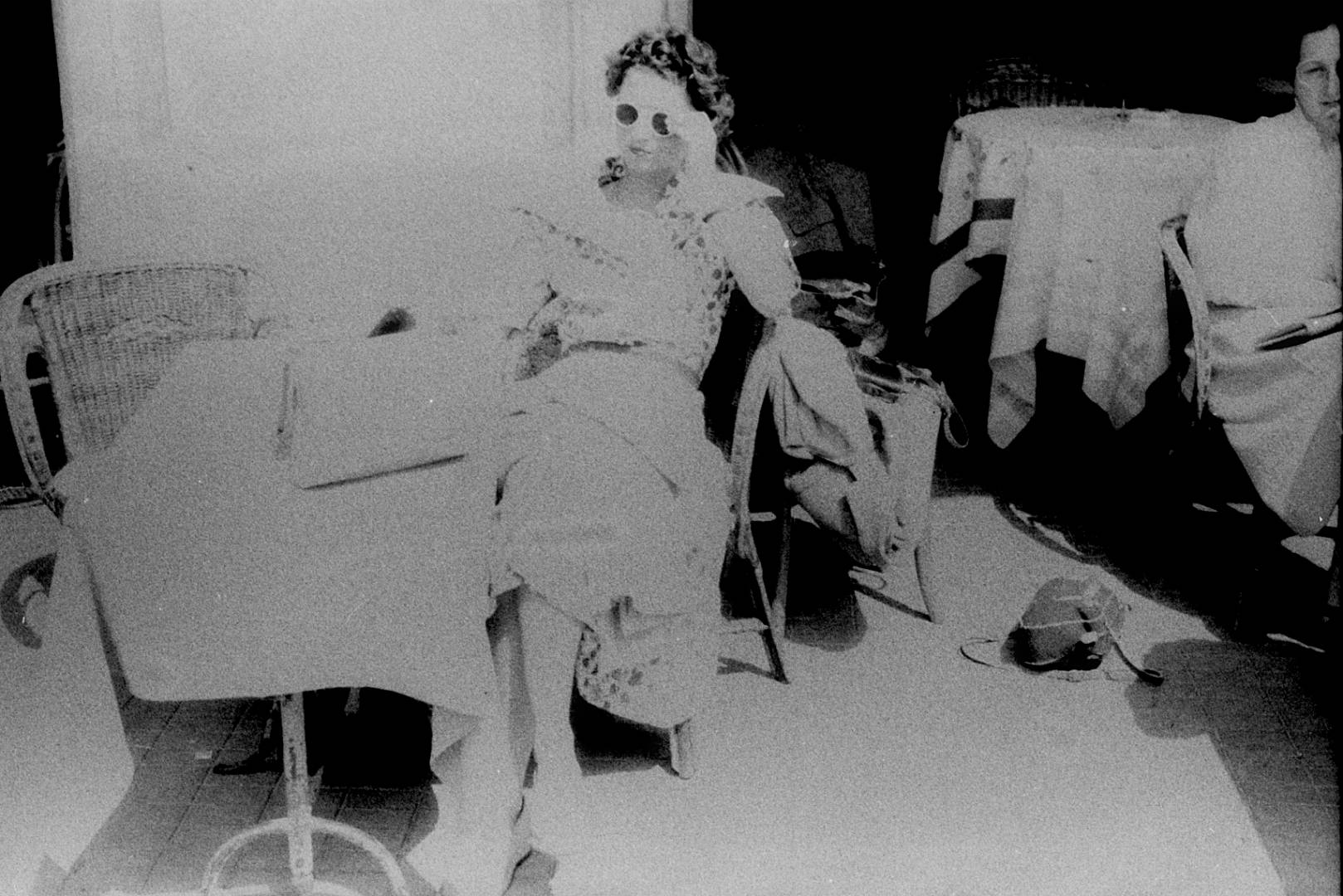
This was taken at the same restaurant/cafe. It was even more overexposed than the last frame, and I had to make it very contrasty to bring out the woman’s dress and features. On a rescan, which was less contrasty, I also noticed that the little dachshund was sleeping under the table while they were having their meal.
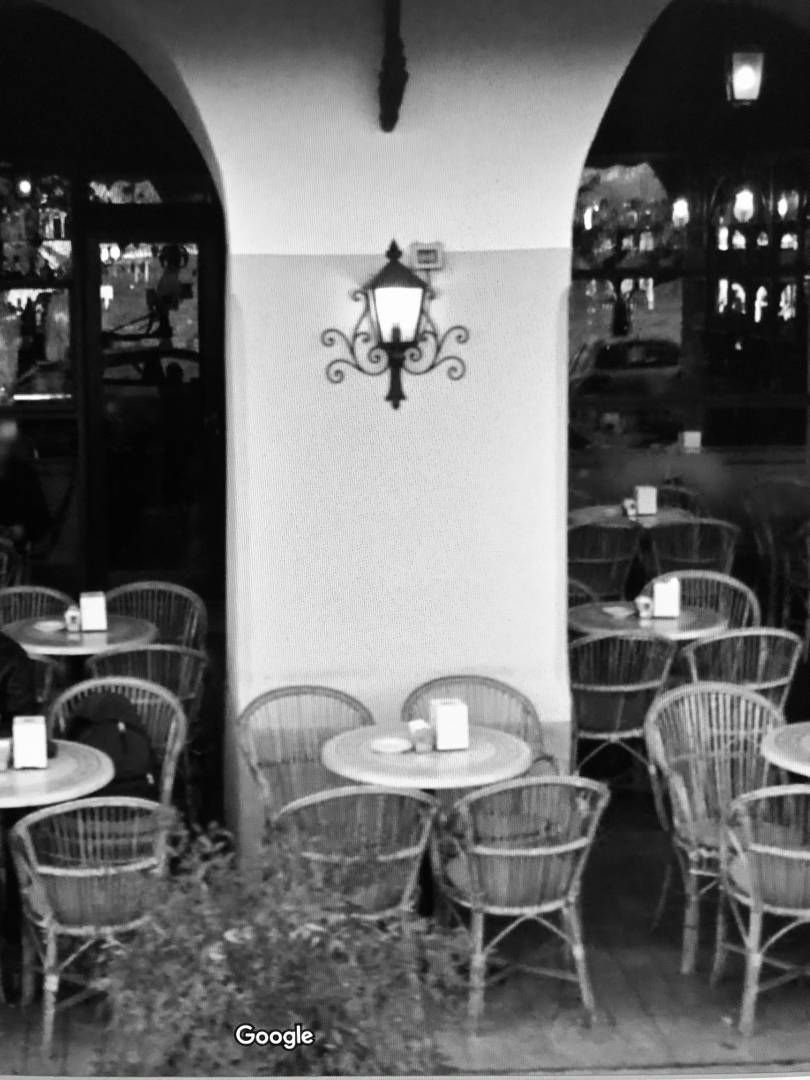
Again I have to thank reader Chris Rodgers and Toby Vickers for identifying the cafe and the table position, at which the couple sat seventy years earlier, in thin the above current photo. The major difference which I can see is the table in that position is now round whereas it was square in 1950. There is no name on the premises, but there is a sign nearby saying Crown Gold Shop which may refer to a retail shop.
This is the map for Stage 4 which mainly shows a boat trip across the lake:
Fifth stage
Menaggio- Lenno-Menaggio – 15 km return – Frames 20, 21, 22
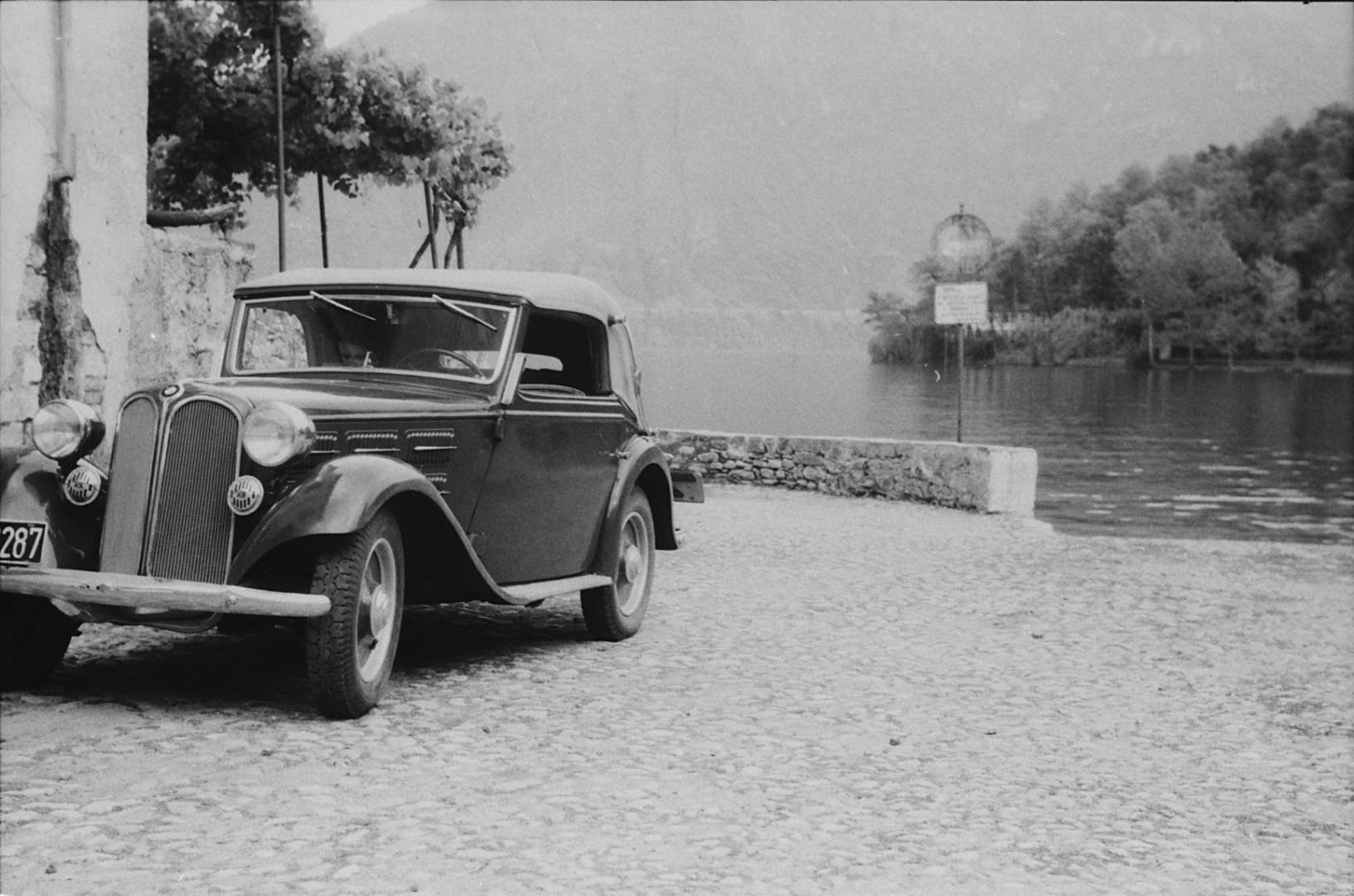
The light seems much lower in the last three photos, which may indicate an evening trip. The car is parked near the lakeside in Lenno, near to where there is an ice cream maker’s shop today.
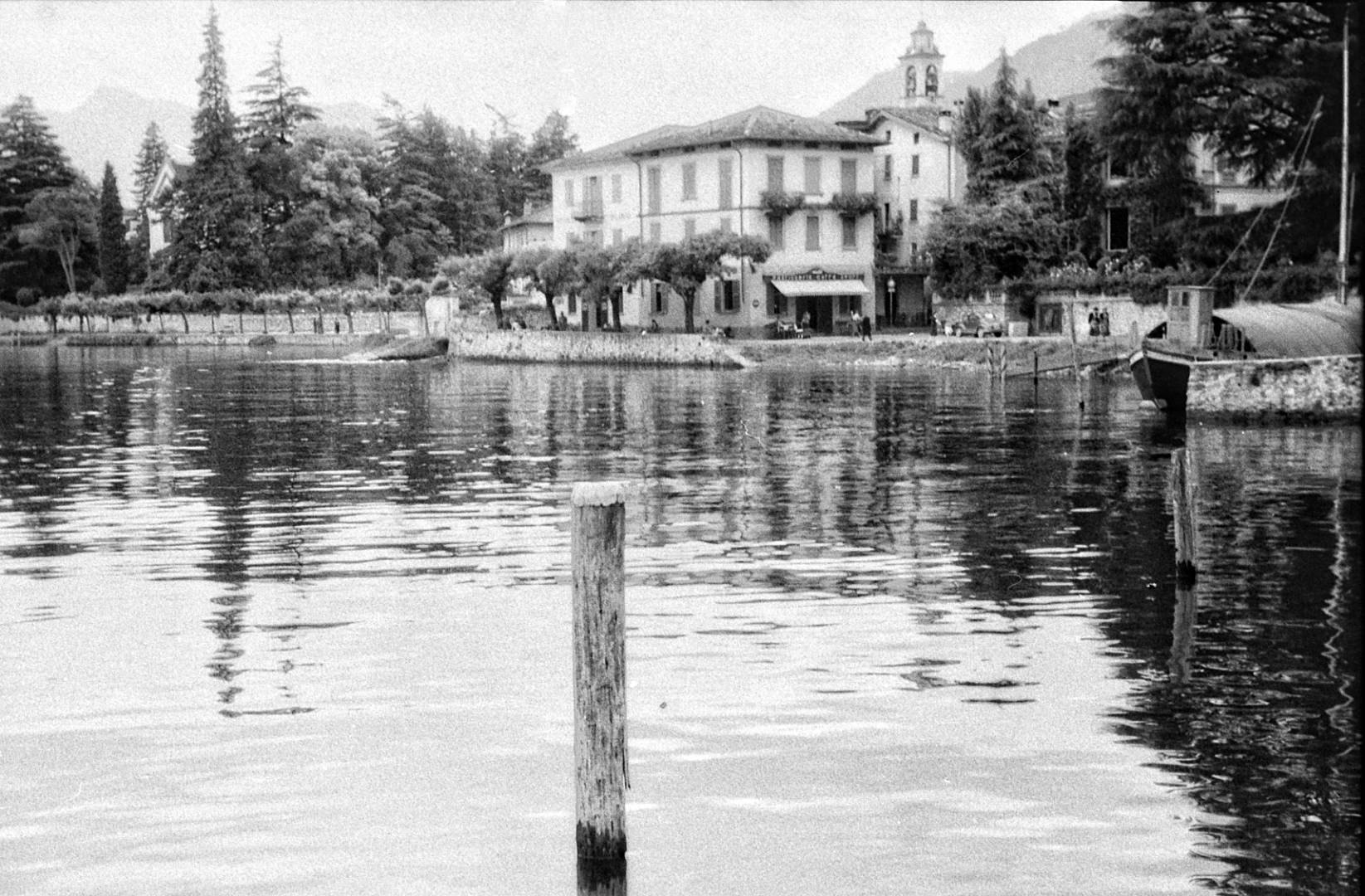
This photo was taken along the lakeside walk in Lenno perhaps on a little pier, given the angle of view over the water
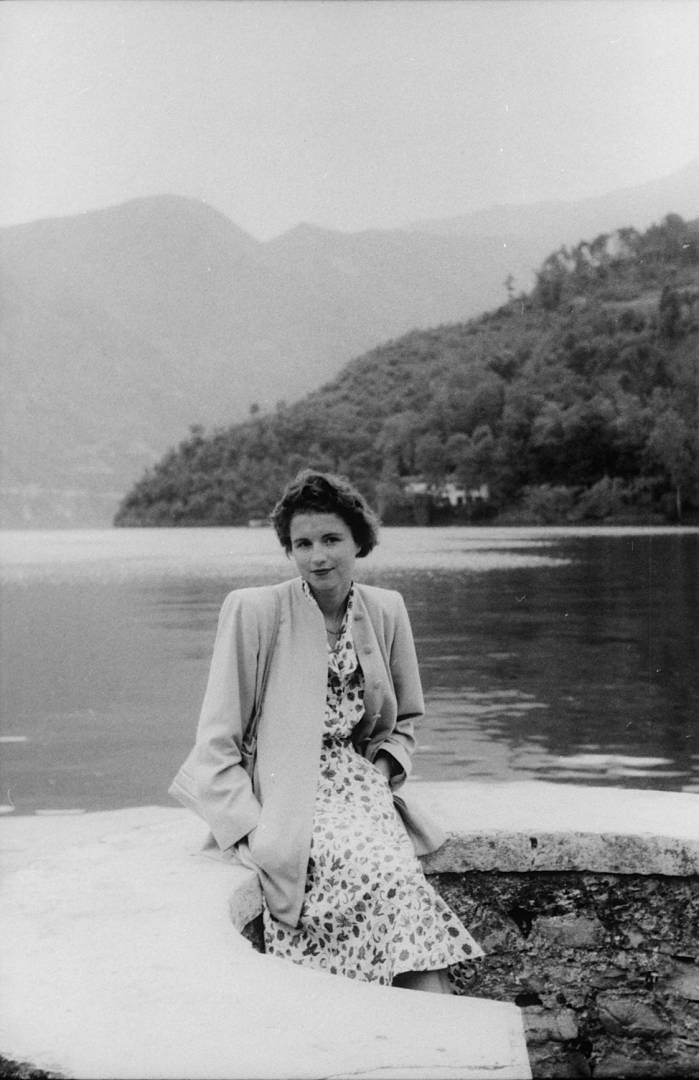
The above frame was taken at the end of a little pier on the Lenno lakefront where there is a round seat at the very end. It is still the same today if anyone wants to have their picture taken with a lovely uninterrupted backdrop.
This is a map for the short Stage 5:
Sixth stage
Menaggio – Zürich – 232 km – no frames
I am assuming that the couple went back to Zürich since that is where the trip commenced. But there are no further photographs. After Frame 22, the roll of negatives is completely blank, indicating that no exposure had taken place. When I received the camera, the FILCA brass cassette, which can only be described as an industrial-grade product, had the film completely rewound into its “brass tomb”.
The FILCA locks when it is taken out of the camera, but the film has to be rewound first. So, whoever rewound the cassette was doing something deliberate. There is, of course, no evidence as to who might have done this, the person who took the photos, a dealer or another subsequent owner. When you know how to do it, it is easy to check whether there is film in a Leica camera without opening it.
The other noteworthy thing about this trip is that the photographer was very parsimonious about using film. Only 22 frames in over 500 km of a trip around lovely places would be extraordinary in today’s spray-and-display digital world.
This is a map of a possible journey back to Zurich where the trip began:
What camera was used?
Unfortunately, I did not keep the FILCA cassette which contained this roll of film together with the camera it came with. The FILCA brass cassettes can be used only with Leica cameras. I sent the details of two Leicas, which I received with FILCAs and which were mentioned in my original article, to the Leica Archives and I have to thank Karin Kaufmann and Tim Pullmann of Leica for their assistance in providing me with the details I required.
The chrome Leica IIIa camera with the red box went to Berlin, but it seems it may have soon migrated to Sweden from where I bought it some years ago. The box, which carries the serial number of another similar camera, has writing in Swedish inside the cover which we have had translated with the help of some Macfilos readers. This indicates where it may have been used in April, May and June of 1935.
It seems that the camera may have been at an event on 2 June 1935 which was attended by the Crown Prince of Sweden and it may have taken the Crown Prince’s photograph, which we have from a book commemorating the event. A story about that camera will follow in the future. I have not eliminated this camera from the ‘Swiss Roll’ hunt as experience has taught me to expect the unexpected when it comes to old cameras.
In the original article, I said that the cassette might also have come with a black Leica III, also from 1935, with the serial number 172472. I will focus on this camera here. Below is what I received from the Leica Archives in respect of this camera. They are just vertical and horizontal images of the entry for the camera and the entry for the camera is across from the number 72.
The Leica Archives were handwritten in those days, and I had to consult my friend Jim Lager who is a fellow LHSA –International Leica Society – member and distinguished author on all things to do with old Leicas. He recognised the dealer of the camera as being a company called Perrot which is today in Nidau near Bern in Switzerland.
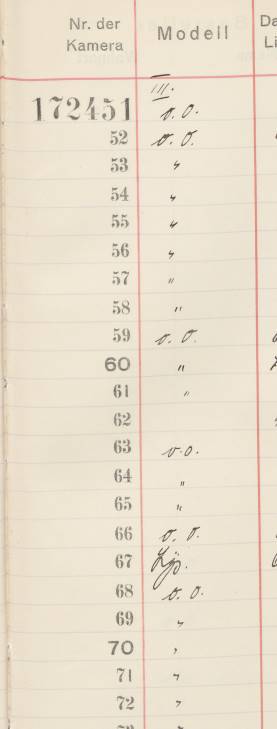
I have emailed Perrot in Nidau and also Koch in Zurich about the camera. Perrot is no longer a Leica dealer/distributor, but Koch is and has been since the 1920s. I have not heard back from them, which is unsurprising about an 85-year-old camera, notwithstanding GDPR and other modern hurdles.
I got the ‘Swiss Leica’, not five years ago, but a little over seven years ago at the Westlicht (now Leitz) Auction in Vienna where I am a regular customer. I have not approached them, but it is unlikely that whoever was selling it was any of the parties from over sixty years previously. The camera appears to have had a repaint of the top and bottom plate which are in better condition than the nickel ‘furniture’ on the camera. I would probably not buy this camera today as I prefer cameras with unrestored paintwork.
The camera came with a nice leather case, a user manual in German which was without the outer cover pages (I have the same manual—July 1935 issue—in English). It also came with an orange filter for the nickel Summar 5cm f/2 lens and also an orange ORAKO filter to improve contrast through the rangefinder window. Neither the leather case nor the manual has any writing or inscriptions of any kind.

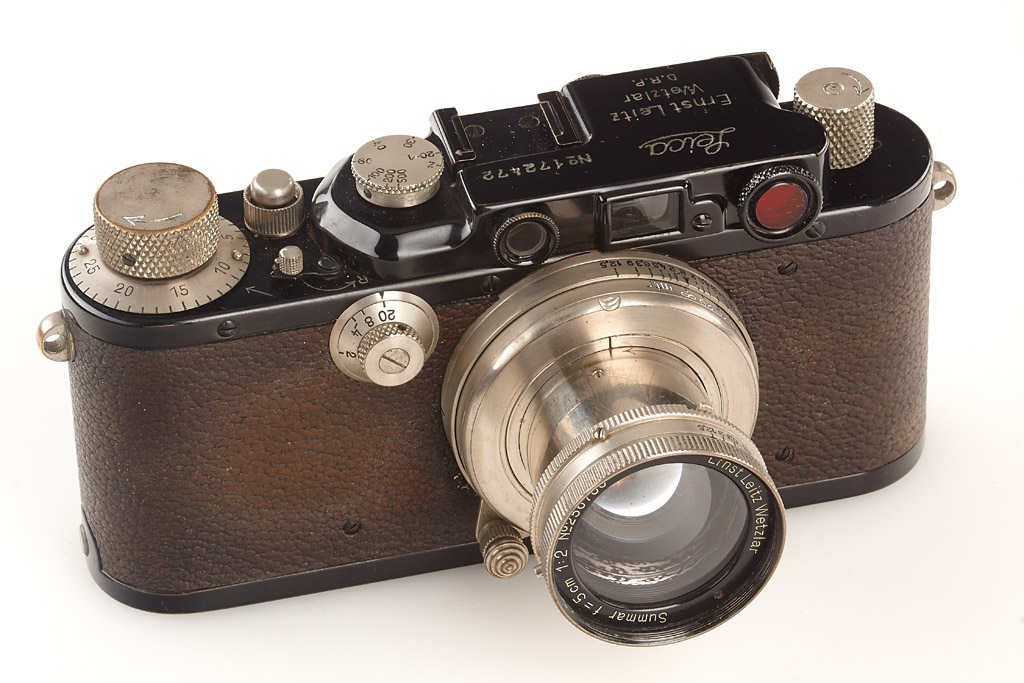
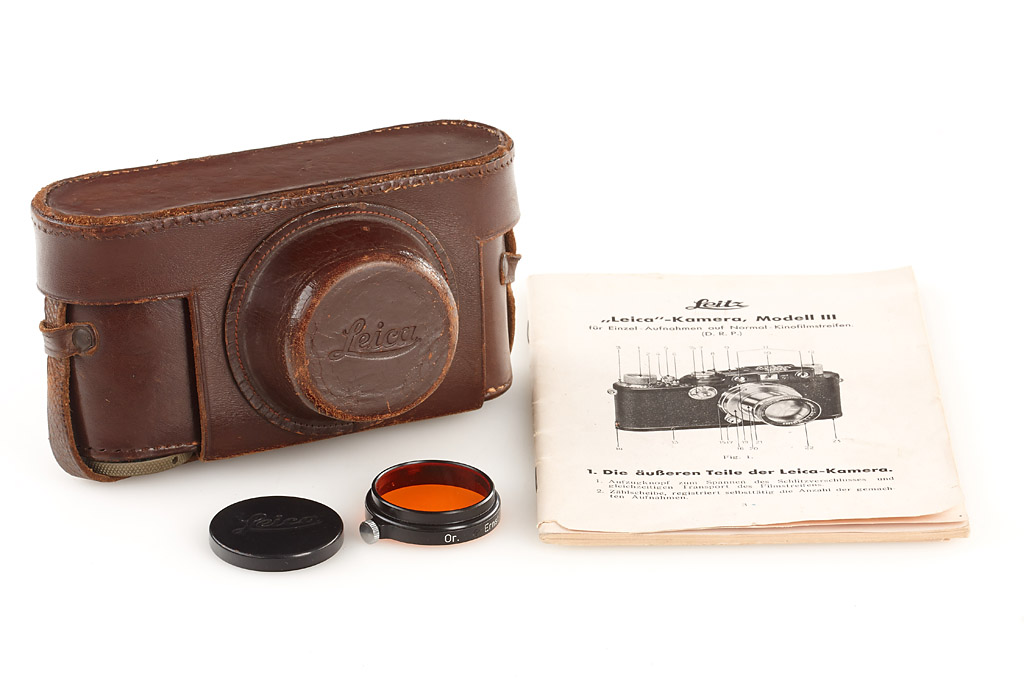
The camera is still capable of producing fine images, as this example which I took in 2013 shows:
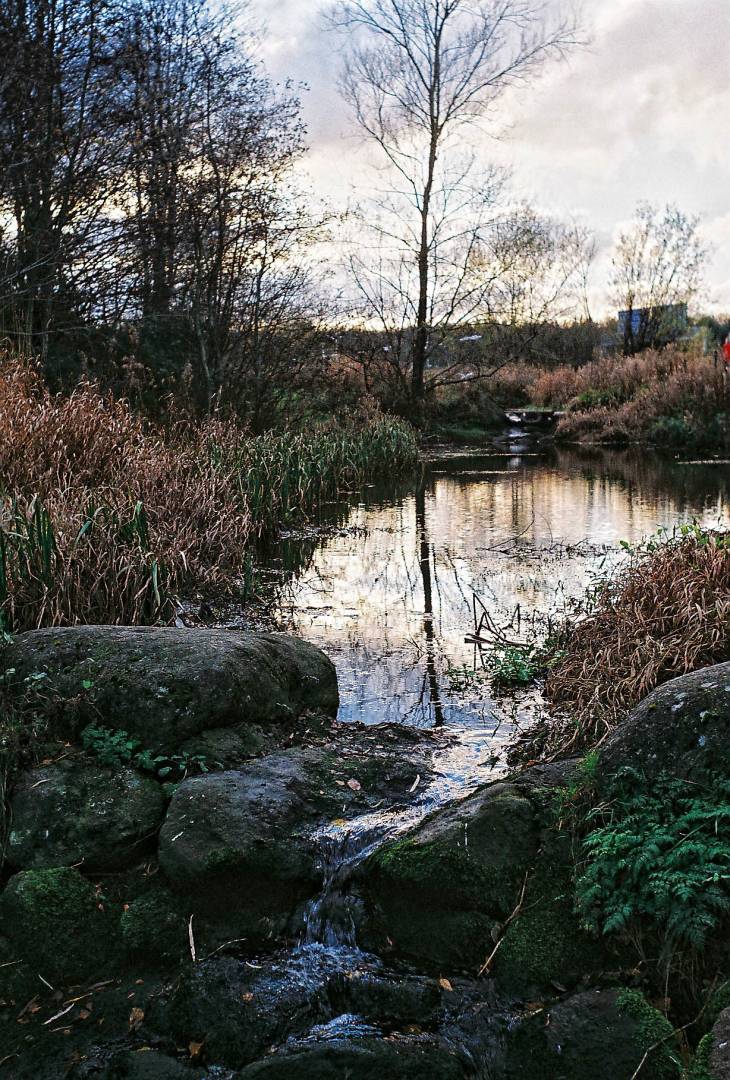
To finish up on the camera angle, all I know for certain is that a Leica was used as the cassette could only be used in a Leica camera. The FILCA brass cassette could have ‘joined-up’ with one of my Leicas at any stage in its long history since 1950. On the other hand, it might have been with the camera all the time since 1935. We might never know.
And what about the car?
…I hear you all say. A good 50 per cent of the comments and emails have suggested we check the registration number of the car. Well, we had been on that right from the beginning back in August. The BMW 315 was registered, probably in 1948, by the US authorities in Bavaria. We had thought it might have been from Munich, but more recently, Garmisch Partenkirchen has been suggested. This registration would likely have changed later, particularly if it was imported into Switzerland.
We made enquiries with the Munich registration office, but they do not have records for that period, and it seems that some of the records might now be in the USA. The records relating to the US administration in Germany in the immediate post-war years are huge, but we will give it a try, perhaps with some help from our US friends in the LHSA. I have also emailed the European Association of BMW Clubs about the car, and I am awaiting a response.
Does the search end here?
The search will go on. We might find something from camera, car or hotel records, but all of these are very much long shots due to the passage of time. The most likely way an identification will come about is through someone identifying one or both of the people in the photographs. There are many issues related to that, including access to online and social media, language, location and age.
Read earlier articles, including the original, outlining the Swiss Roll mystery
Finally, thanks…
I have many people to thank concerning this story. First, there is Mella Travers of The Darkroom in Dublin, without whom I would not have the roll of negatives. Next concerning the cameras, I have to thank Karin Kaufmann and Tim Bullmann of Leica for the excerpts from the Leica Archives and my friend and fellow LHSA member Jim Lager whose encyclopaedic knowledge of all vintage Leica matters led me to identify one of the cameras as having been distributed through Switzerland. I must also thank my friend and fellow Leica Society member Phil Coomes, BBC Picture Editor who started the global end of this search. Then there are all the many respondents here on Macfilos and elsewhere. I am loath to mention particular names and I apologise profusely in advance to anyone I do not mention. Still, I would like to reference Chris Rodgers, Christopher Walker, Toby Vickers and Peggy Rüegger on Macfilos and Thomas and Frank on the Leica Forum. All of them gave excellent information on various locations. Finally, I must mention our indefatigable editor Mike Evans, who I struggle to keep up with at times, even though I am a few years younger than him.

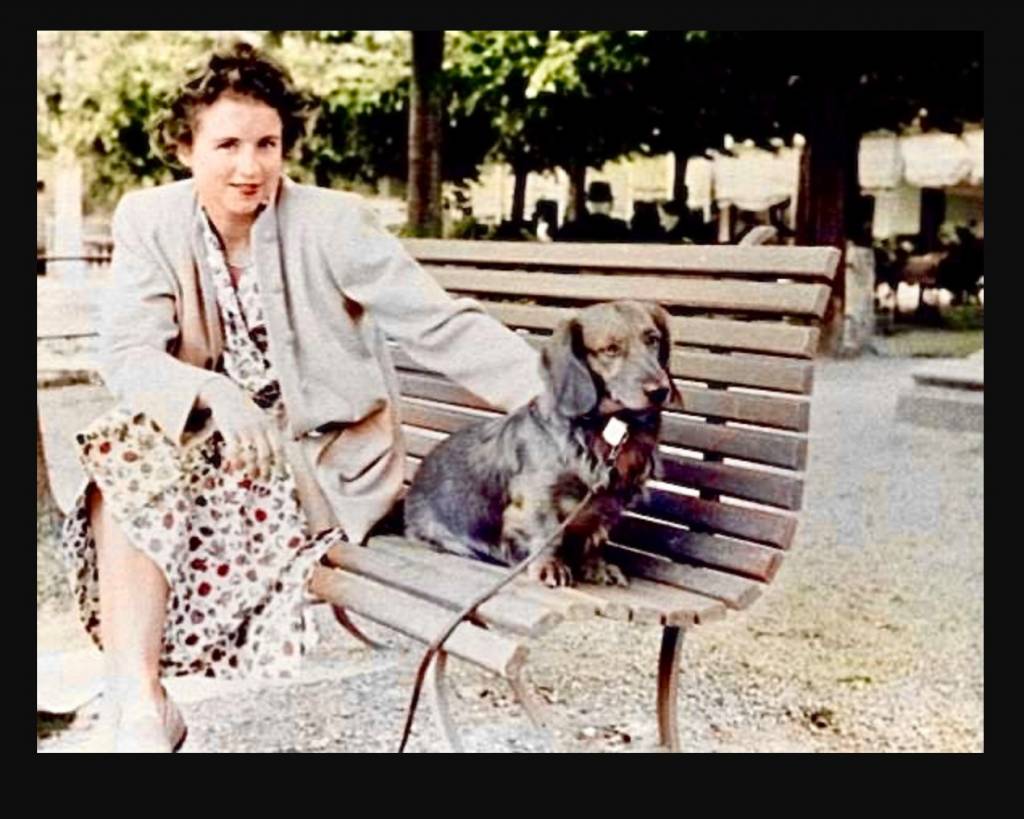
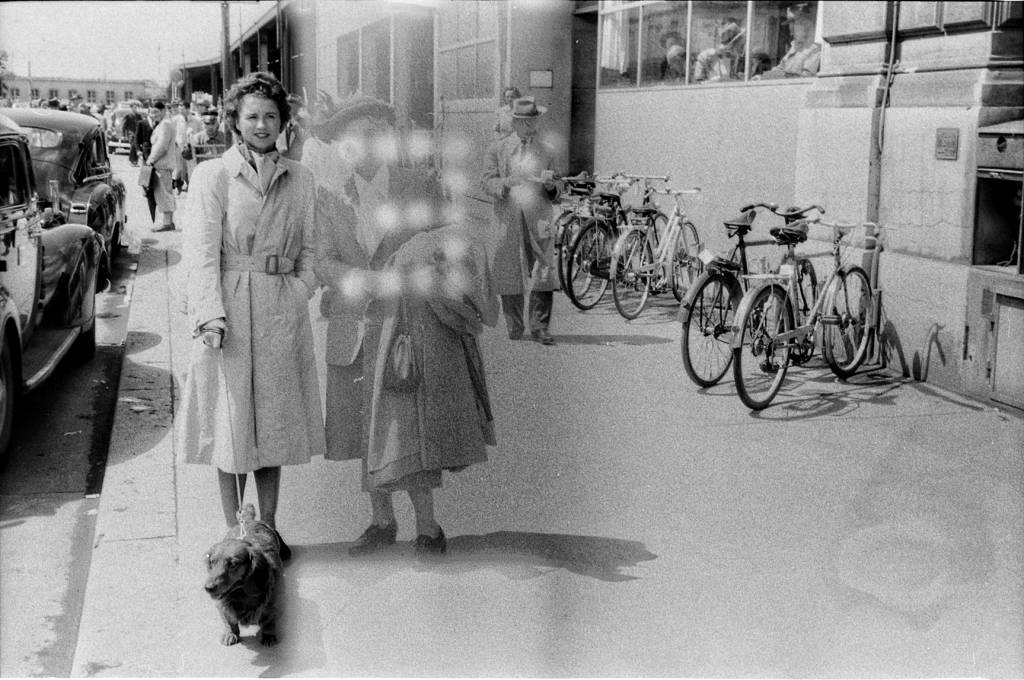
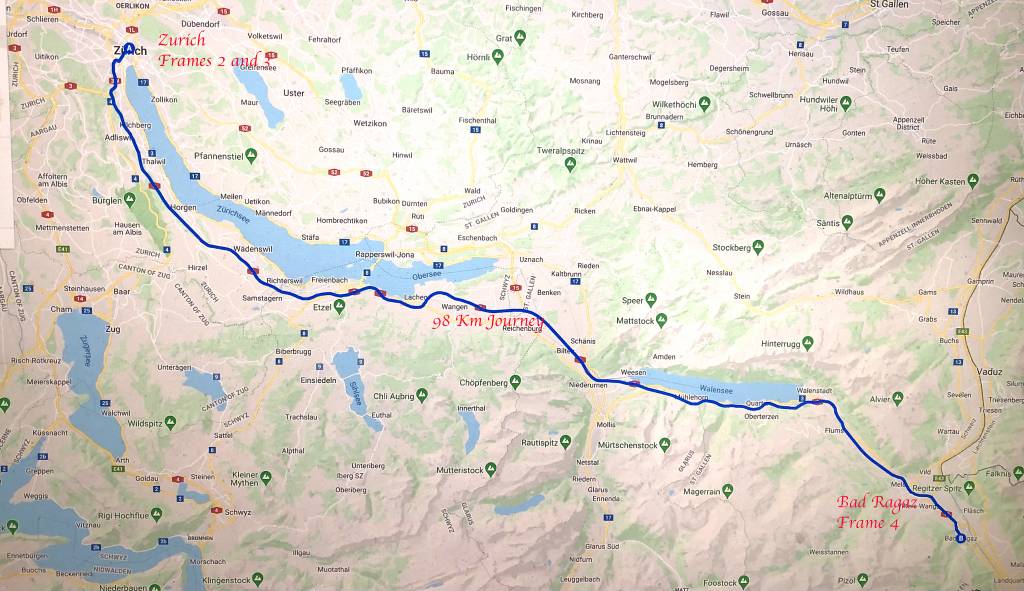
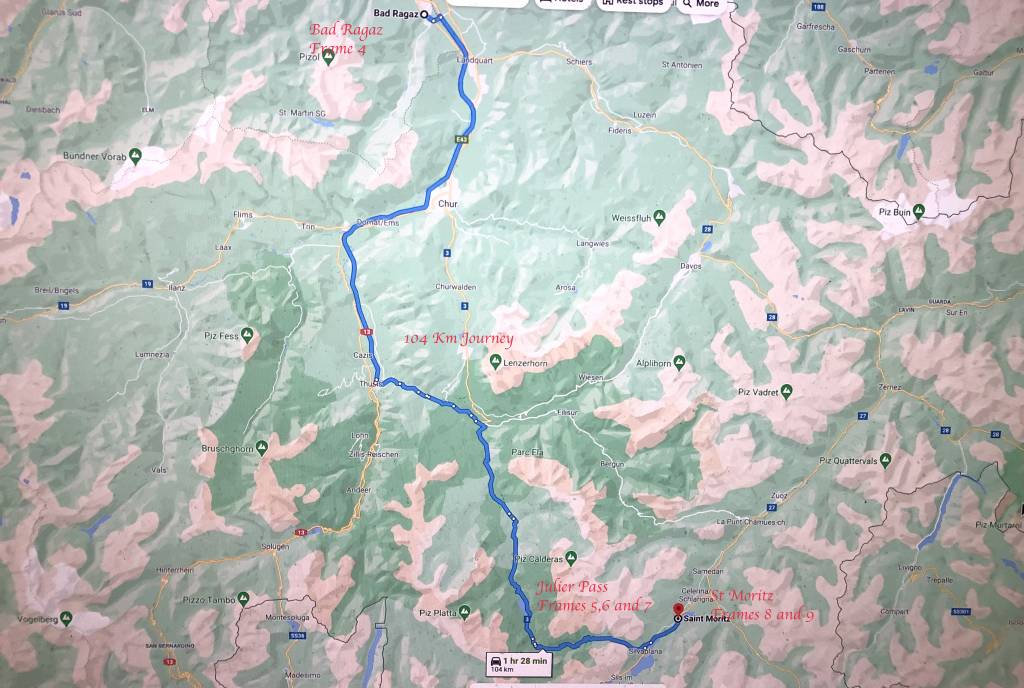
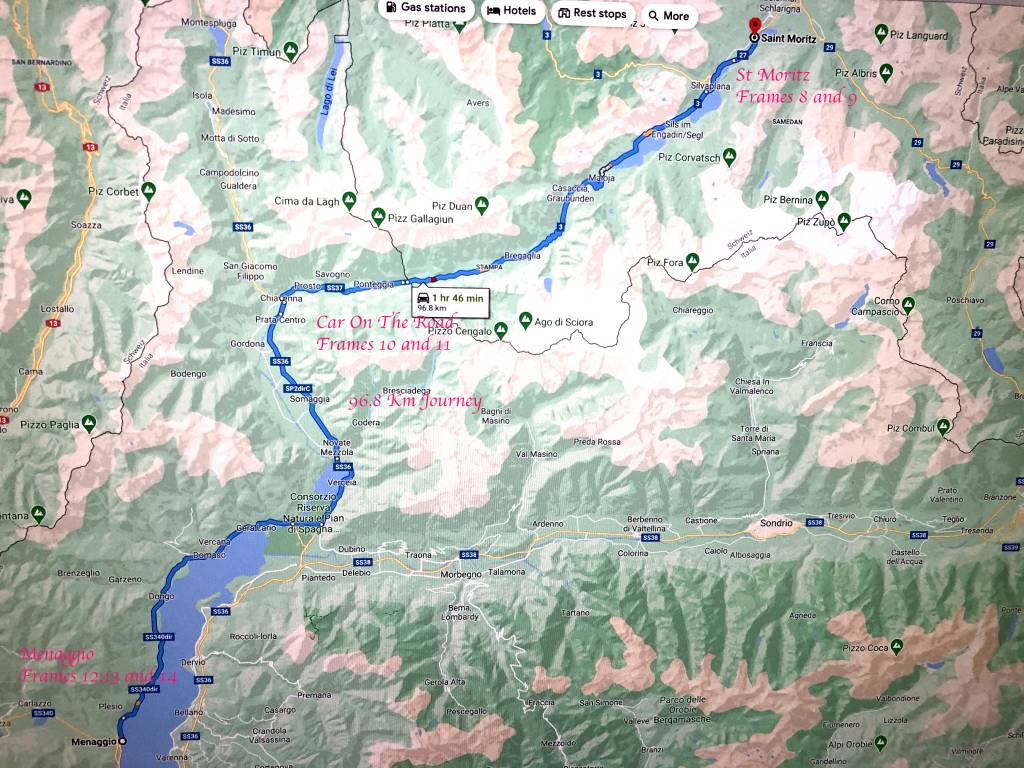
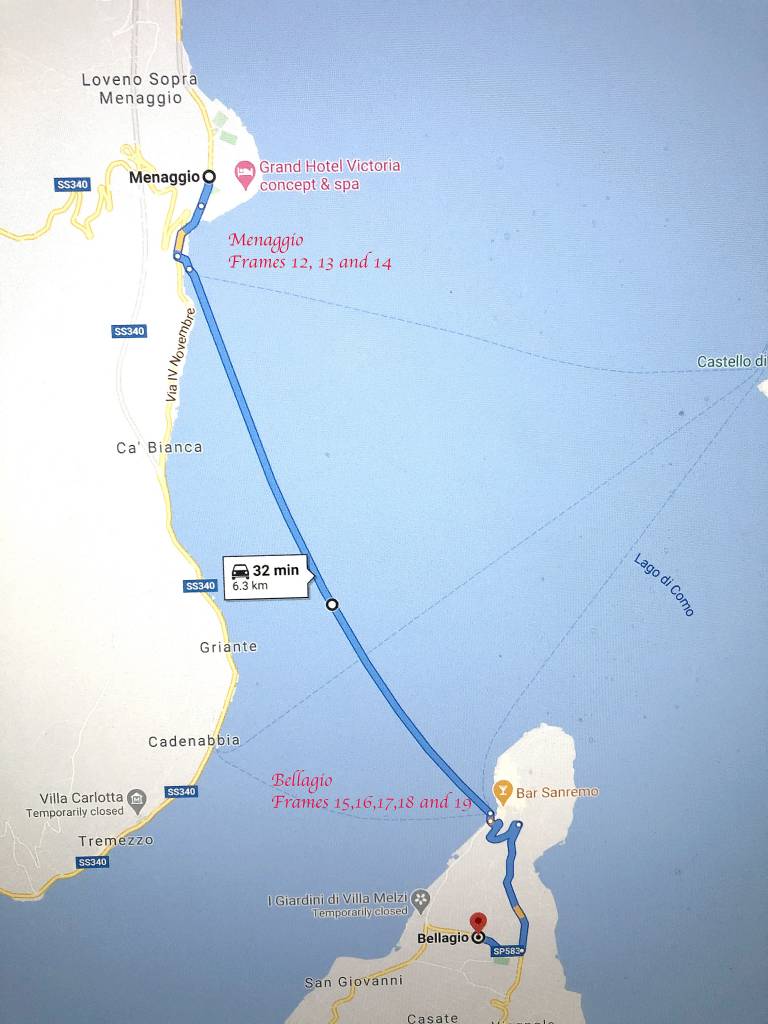
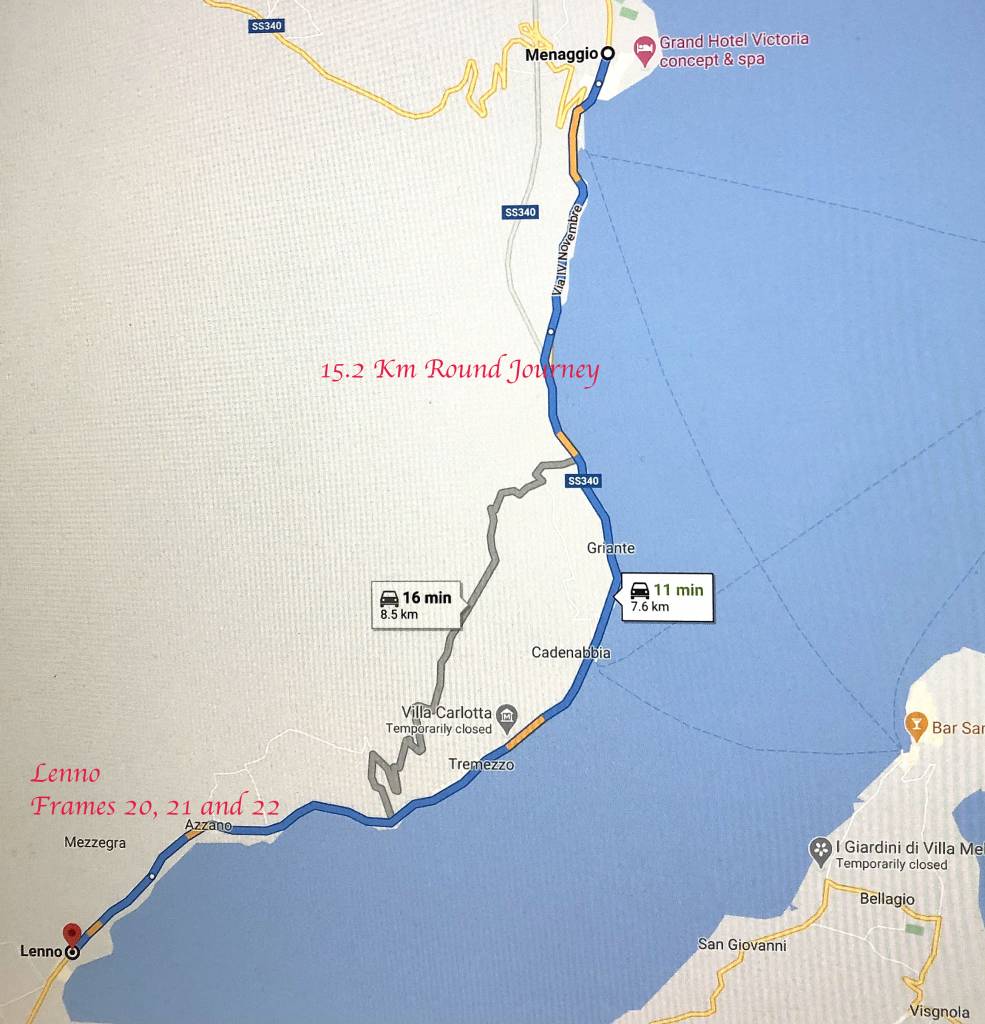
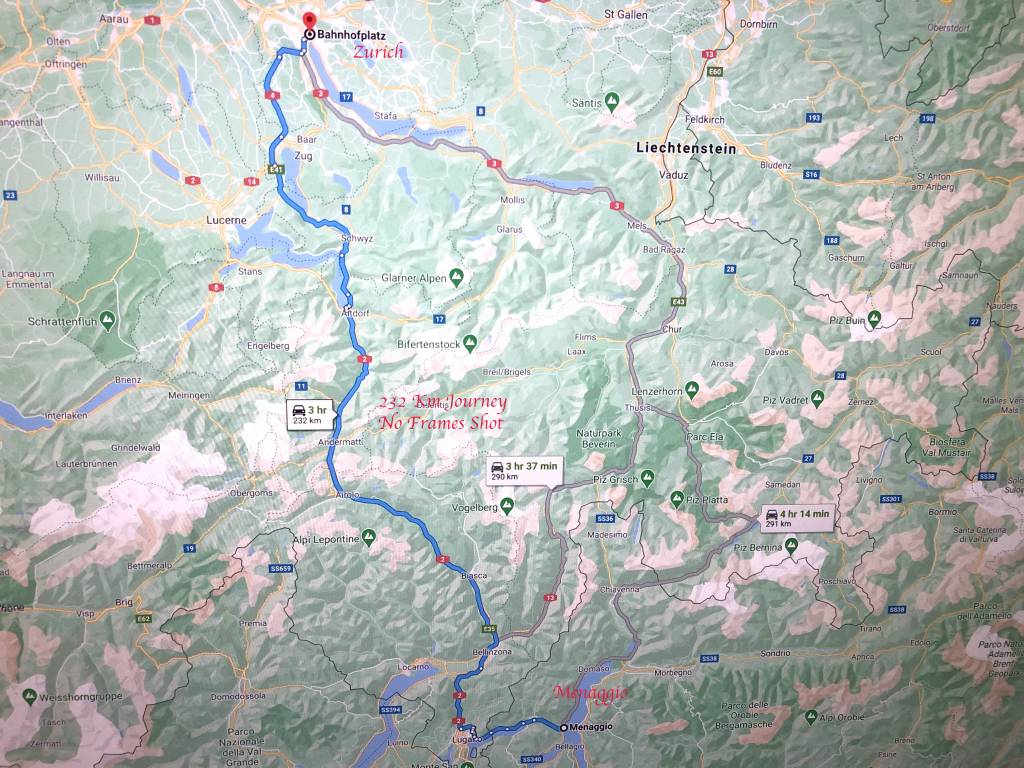
Mike, thank you for this fantastic read! While reading, I have lost myself in the story and felt as a fellow traveler of the couple and the dachshund. Beautiful pictures, so much mysteriousness. Wonderful!
Have a great day!
Thank you, Tom.
DNA testing the original Leica film cassette could reveal several users’ DNA which could be matched to DNA databases to identify the closest relatives. The interior cassette spool would likely have been handled less than the outer cassette. Multiple users’ DNA traces could be ‘washed out’ and separately identified. Recent DNA traces, e.g., WF’s, can be ignored. DNA testing is commonly practiced by forensic labs and ancestry companies. It’s expensive but the cost could be crowd-funded. DNA testing an individual’s saliva costs c. £125 but cost varies depending on required depth of analysis. Testing multiple users’ DNA could cost €’000’s but if crowd-funded, could identify the original camera owner’s family.
An interesting suggestion, Dunk, and I am sure William Fagan will agree. As you say, it would need funding. Perhaps some organisation would take it on as a freebie in return for the publicity it would bring. The BBC would undoubtedly be interested and this could spark a new world-wide Swiss Roll frenzy… Over to Just William.
Has the mystery couple from the Swiss film roll ever been identified?
No it hasn’t. And we are not making any more efforts. I suspect we will not solve the mystery now. At least the story is still out there in the public domain and there is always the chance that something could come up.
The Macfilos article on the “Swiss roll” mystery is a fascinating exploration into the power of photography and detective work. It’s incredible how a 70-year-old roll of film led to a worldwide quest, blending history with the thrill of discovery. This story not only underscores the enduring impact of photographs but also the human connection they foster across time. A must-read for anyone intrigued by the intersection of history, photography, and mystery.
Es ist faszinierend zu sehen, wie dieses 70 Jahre alte Foto-Mysterium weltweite Aufmerksamkeit erlangt hat. William Fagan liefert weiterhin fundierte Informationen über den Fortschritt der Suche nach den Familien der Personen auf den Fotos. Trotz der Vielzahl von Spekulationen bleibt die Identifizierung der Personen eine Herausforderung, und jeder Hinweis ist willkommen.
[Translated} It’s fascinating to see how this 70-year-old photo mystery has gained worldwide attention. William Fagan continues to provide in-depth information on the progress of the search for the families of those in the photos. Despite the multitude of speculations, identifying the individuals remains a challenge and any leads are welcome.
Hello, great read this! I’ve been engaged for several years now on a similar project, namely LGG, the short clip on a mystery woman at the end of WW II.
Anyways, am just pointing out here a technique I’ve used called azimuthal angle, that is, linking the latitude (given here you got locations) with the time is the day, as derived by the angle of the shade from the sunlight in a photo. I’ve used this trick to derive plausible travel patterns of Sudete refugees and PoW at the end of the war.
Not sure it is relevant here, you seem to have their plausible itinerary info already.
On a different note, yes the scarcity of photos is interesting. The cost of rolls and printing might be plausible for less well off people, surely not the case here. Mind you, we’ve all been caught regretting not taking more pics at certain events of our lives, taken up in the moment.
Again, great effort!
What I am about to say has no proven connection to the mystery couple. However, several contributors here have said out of pure speculation that they most likely were Europeans. Why make that assumption? Why make any assumptions? As William often points out, if it isn’t proven, it’s just guessing.
Well, I’ll tell you why speculation is NOT a bad thing when one is solving a mystery. Part of the process is seeking documentation so you have a framework of facts. After that you use your knowledge, your instinct, and your imagination to create scenarios… because somewhere at some time, something might ring a bell. You keep a clear head that your scenarios are not proven, yet keep notes to review.
Here is one of my observations from years of research and genealogy work:
People who were originally from Europe but who migrated elsewhere, leaving parts of the family behind, could be anxious to reunite after the war. They may have immigrated much earlier to the Americas or Australia. But WWII got in their way and nobody traveled to or from Europe until it was over and things had settled down with the Allies Occupation. It wasn’t a matter of being wealthy to afford airfare. They had strong motivation to make the trip before it was too late. (For example, to see an aging parent whose health was failing, or a sibling who had lost touch, or to resume an interrupted engagement.) They would sell belongings, borrow money, or “save up” to make such a trip.
That is not a guess. It is, in general terms, the truth. And no, William, my thoughts do not bring us any closer to solving your mystery. But then again, they might do so in the future!
All my best to you to all of you who are ‘on the case!’
Hello!
In the image number 17, a ring is visible on the girl’s hand. If the ring was engagement, it’s means that she is Orthodox or single if Catholic?
The ring is not visible on the man’s hand. Possibly because of the bright light.
Pjotr Bombin
Thanks, Pjotr. There are different traditions in Europe as well as the rest of the World as regards the wearing of rings and whether they indicate engagement or marriage. In some countries a ring is worn on the left hand and in others it is on the right hand and in other parts of the world such rings are not worn at all. I have never speculated as to what the relationship was between the couple and I don’t intend to start doing so now, 70 years after the trip. If we can identify the couple we might be able to work out what their relationship was in June 1950, but, for now, anything said is pure speculation, even if both of the couple were seen to be wearing rings in the photos.
William
Yes, William, as I wrote to Mike , it arrived in Brazil, so I believe that soon it will arrive in some relatives from them . I hope it very much.
Hugs
It’s be possible that they were American , an Army officer and she a nurse , maybe . The was had finished and they were still living there as peacemaker Army .
Thanks. Yes, lots of possibilities but nothing concrete yet, I’m afraid.
I think that if it arrived in Brazil, I am sure that the all world also had seen the pics , and soon some relatives of them recognize them. I hope ! An interesting history.
Hugs
Thanks Vivian
We have not reached any conclusions about the nationality/ies of the couple. My own sense is that they were probably German speaking and that one or both was of German nationality, but this is based on tiny bits of information, much of which could be circumstantial. It is also possible that people who would have known the couple are not part of the online world and have not yet seen the story in circulation.
William
No, Villa d’Este went to having a show every two years, and the last one was 1949. You know that! I am trying to ferret out WHO was driving the vintage car. We have nothing on that except it’s not the lady in the print dress, but we assume the driver is the photographer. Two points: it would have been savvy for a hotelier, who would have known for a year that the Villa d’Este was not hosting a show in 1950, to put together a show at his own hotel, some place that was swank enough to attract a similar crowd. Perhaps another villa or the Grand Hotel Victoria in Menaggio.
I also have read that non-competitive touring events were held, available to ordinary car buffs, not necessarily the creme de la creme crowd. Round-trip Zurich to Lake Como has always been a popular auto tour. The drivers simply had to cover the prescribed route of travel, with places along the way where they were required to check in and often they were required to take a photo of their car to prove they’d been at the particular checkpoint. Both the Julier Pass and St. Moritz were mentioned as checkpoints. Isn’t that interesting? —Linda
Thanks Linda. While what you described might have happened, there is no evidence of that at this stage. There are no photos of other people with the couple other than the older woman in Zurich and there are no photos of other vintage cars. The car does not have any badge or other insignia to indicate that it was taking part in a rally type event. The photographs shown in sequence above are the only hard evidence that we have at this stage. All the evidence here points to a ‘brief holiday trip’, but there could be other possibilities which are not represented in the photographs. We may never know about what was happening ‘off camera’.
William
I will show those pics to my mother, – she hung out with people like them. Born 1927, grew up in Lugano/Como, moved to Zurich in 1951. Will let you know.
Regards from Zurich (18°F)
Keith
Thanks Keith. I look forward to any feedback you might have.
William
William, I did show these fotos to my mother. No luck, but she said they look austrian.
good luck
Keith
Thanks Keith. The search goes on and we are still working on making a documentary film about the story. All results will be mentioned and posted here.
William
Oh, William, you are such a stickler for staying on point! Good for you. I was sharing another possible angle to explore, that’s all. I found a photo circa 1960 of a parking lot full of 1930s-40s cars in front of the Hotel Grand Victoria in Menaggio. Yes, I know that’s 10 years after (wasn’t that the name of a rock group?) but thought those here who are already interested in vintage cars might find reference to car shows at the Hotel Grand Victoria in Menaggio (btw, not to be confused with the Grand Hotel Menaggio, close by). —from Linda, the Happy Hunter 🙂
Thanks Linda. Suggestions are always welcome. I suppose that the details of what is on that roll of film are printed front and centre on my brain at this stage. We have been to the BMW Owners’s Club and to the owner of a website on vintage BMWs, who referred us a leading expert on such cars and to the top expert on historical German vehicle registrations. At the beginning we also went to a former VP at BMW who was known to Mike for many years. All in all we have probably got as much information as we could possibly have got on the car, but, of course, if it emerged that there was a show in Villa d’Este in 1950 then we might have another look.
William
Ten Years After still exists!
Hi guys, me again. This is a bit of entertainment for rare car buffs. All the fascination with the man and the car prompted me to find out if there were any annual car shows at Lake Como in the spring. Turns out there is. Concorso d’ Eleganza at Villa de Este, which started in the 1920s. It’s usually held at the end of May. It appears many of the early shows were in September. The event fell apart in 1951 and was revived by Villa d’Este and the involvement of the BMW vehicle groups in the 1990s. The Concorso has a fascinating website with lots of photos. The location of the annual show is a 40 minute drive south of Lenno.
https://www.concorsodeleganzavilladeste.com/the-event/history/
You know, Linda.
That may have been “it”!
The man may have been one of the visitors of the rare car fair and has chosen to visit again.
and, P.S. Elwood Blues is not really a bad driver, it is just that he doesn’t really care. Yep!
Thanks Linda. I have long been aware of the Villa d’Este event and it is one that I would really like to visit sometime with beautiful cars and a beautiful house in a beautiful setting. What would there be not to like? It seems, though, that the event did not take place in 1950. The website records an event in 1949 and then an attempt to revive it 1951. To visit the location, the couple would have to driven southwestward along the lake from Lenno and have taken the ‘long route’ back towards Zurich. However, the roll of film ends at frame 22, taken in Lenno, and we have no evidence that the couple visited the Villa d’Este location, let alone a car show.
William
OK, thanks…not totally different than here, I guess, where we get plates from the state. As kids riding with our parents on a road trip, we used to watch the traffic around us and see who could name the state the soonest. Everybody knew to go on High Alert if it was an Illinois plate. They had the reputation of being bad drivers.
I noticed that the last 4 numbers of the mystery plate (3287) are the same as a phone number in the 1949 phone book for the Vienna Post Command, under the heading of Motor Transportation and Motor Officer. I know, coincidental, but stuff like that makes me want to learn more about licensing over there.
Linda
I didn’t think you cared, Mike. These letters are now so small on EU number plates that you have to have a car stopped before the country of origin can be determined. We can also recognise the Northern Ireland regs, of course, and these are the most relevant and most frequently seen ‘foreign regs’ on our roads along with those from GB. The objective of the EU plate is, of course, freedom to travel within the EU, of course, but that is about to change for you, in what way it is not yet fully clear. There will be freedom to travel between the two islands, of course, as the Common Travel Area will be maintained. There are Covid travel checks near the Irish Border right now and people who are travelling to and from work (and there are quite a few going in both directions) and essential goods traffic are both affected, but it is for a very good cause which nobody should object to.
William
What in the world is the big disc attached to the rear right of the BMW? Some kind of reflector? Military designation?
Are you referring to the International identity disc, D for Deutschland? The system is still current. For instance, cars from the USA driving in Europe need a large oval USA sticker, as do British cars with a GB sticker. In 1951 this plate would have been compulsory on any car crossing the German border.
Correct , Mike. In Europe in recent years this information has been incorporated into number plates. Britain may, of course, take a different path post Brexit.
William
Yes, British cars now need a GB plate for Europe. Or a small GB with Union Jack on the left of the plate where the EU symbol was.
William and Mike: Very interesting! Thanks for answering my question. Were you able to enhance the contrast enough to be sure it’s a D? I could see something dark in the middle but that’s all.
Do you know what letters would designate Austria, Switzerland, France, Spain or Italy at that time? Were there special temporary designations for the various zones of post-war Austria occupation 1945-1955? Is there a website that talks about this for 1945-1955?
Linda
It is definitely D. Austria is A, Switzerland is CH (Confœderatio Helvetica), Italy is I, Britain is GB, Belgium is B, Holland is NL, France is F, Spain is E. But you can find a list, I’m sure…!
And, just for William’s benefit, not to feel left out, the Republic of Ireland is IRL..
Definitely a D for Deutschland, still is that today. Off the top of my head they were probably AUT, Ch, Fr, Es and It, but I am sure there is a site somewhere with these designations which today are integrated into EU number plates. Europeans are very familiar with this concept. We have known from the beginning that this was a German registered car, but there no records in Germany relating to its registration number. There is an outside chance that there might be some information on the car somewhere in the US Government Archives system, but whether it can be found and, more to the point, whether it will be disclosed remain to be seen.
William
BTW: The “GB” sticker has become a “UK” sticker nowadays on British cars.
Somewhere I read that BMWs used by the German military were sold for taxi cabs/rental cars in Zurich (and probably other places) during the post-war occupation of Germany and Austria. Do you remember anything like that? Maybe the American occupation forces in Vienna and other Austrian cities were able to buy them? The big transport planes and cargo ships could have gotten them back to the U.S. Or, maybe the mystery driver was hiring a car until getting back to Zurich where there were trains to connect with their port of departure, be it ship or airplane. The convertible would have appealed as a rental car for 2. Probably worthless as a taxi cab, though.
Thanks Linda. See my reply to Richard above. I have never precluded the possibility that this was a hired or a loan vehicle. The couple must have had ‘good papers’ as we there was at least one confirmed border crossing into Italy and possibly one coming from Italy as well as possible border crossings out of and into Germany. If we get a registered owner’s name from the US authorities (which is a ‘long shot’) we will still not be certain if that person is either of the persons in the photographs. Things like this are ‘one step at a time’.
William
If that were true, it would send us back to…
…are we playing Snakes&Ladders here?
That’s how I feel…
This won’t help us find the mystery people, but it shows what it was like to drive around Germany and Austria after the war. This is video
https://catalog.archives.gov/id/20333 It also has a text attached. Make sure to click the tiny white triangle at the bottom left. attachments. Military and civilian vehicles are shown. German and French police are shown, and U.S. military. https://catalog.archives.gov/id/20333
Thanks for that, Richard. Certainly freedom of movement across borders was very restricted in those days with abundant paperwork etc. A car coming from Munich to Zurich in 1950 would presumably have received the same treatment and it is certainly the case that a border crossing, in both directions, was also involved with the Swiss/Italian border. I have identified the existing border post today on the road from Bad Ragaz to Menaggio. We must assume, therefore, that the couple had ‘good papers’ for themselves and the car.
On the car, see my reply to Linda below. I have never precluded the possibility that the car could have been a hire or a loan vehicle. Therefore, if and when you get a response from US authorities, even if they are willing to divulge a registered owner for the relevant period, we cannot assume that the registered owner was in fact the driver of the vehicle or either of the persons in the photographs.
William
Sorry, I meant at the end of this December 22nd article.
I have heard from an employee of the U.S. National Archives and Records Administration. I’m glad my message about the BMW license plate has been read by a real person and I have more than an automated response. But basically it says that NARA is currently closed due to Covid restrictions and I’m not expecting results until they re-open. On the other hand, I believe NARA has the records we need and that we’ll eventually get them. See my comments at the end of William Fagan’s December 20th article to see more details about this.
I have just heard from the President of the BMW Clubs Europa. They have consulted with the foremost experts, including the Secretary of the BMW Veterans Club, and they cannot trace any details for me. I am informed that nobody has kept registration details from the time of the US occupation. In modern times, under German data protection rules, all of the data (both vehicle and owner) on any vehicle that has not been registered for seven calendar years must be deleted anyway.
It seems that the ‘long shot’ of an enquiry in the US is the only avenue that is left open to us.
William
Something else I discovered today is that the American occupation zone covered half of Austria, as well as most of southern Germany. If the Americans were issuing vehicle registration documents from Garmisch, it would likely be be covering parts of Austria as well. I don’t know what your press coverage in Austria has been like, but I’d try there as well.
William, I’ve been contacted by a real human being at NARA who has given me additional instructions which I’ve followed. But again, it gave the standard – the response will be slow due to Covid restrictions. I’m encouraged though. A human being has seen my request and has given a preliminary response. Yes, I will email info@macfilos if I receive a name or other helpful information. I’m an optimist and believe we’ll get something helpful. Still working, Richard M. Evans
Yea, that’s what all the lizard people say “Hi fellow humons, I’m a real human being doing human tasks” 😀 😀 😀
OK, I THINK it was a real person. 🙂
Thanks Richard. You may have seen my post above saying that Germany’s leading historic car registration expert has stated that there are no registration details for the car in Germany, so it is all up to the ‘long shot’ in the US now.
William
Just wondering how frequently trains arrived at Zurich HB in 1950. If it were possible to work out the time pictures were taken at the station, then maybe looking at the arrivals timetable could be helpful in identifying what train they had met.
Thanks Andrew. There are some readers who can interpret shadows. One of our readers has worked out what time of the day the couple had lunch in Bellagio using both shadows and the time on the church clock. The same reader has also worked out what day this might have been. We also know the position of the table where they sat. All of this would be remarkable over a 70 year span. I could publish all of this, but it would be no more than well informed speculation and, of course, it would not take us any closer to identifying the couple.
On a less good news front, Germany’s leading expert on historic car registration numbers has just informed us that there would be no records in Germany concerning who registered the car in 1948. There is the ‘long shot’ being pursued by reader Richard M Evans that some records pertaining to this matter might be in the US, but tracing them and having them released by the US authorities could be a different matter altogether. Richard has undertaken to contact us if anything turns up.
Our search goes on, but the possible search criteria are being reduced as we go along. My main hope is that someone, somewhere will recognised one of the parties and contact me through Macfilos.
William
The specific district for the possible emigrees could be
de.wikipedia.org/wiki/Provinz_Deutschb%C3%B6hmen
Funny that the posted car registration office was just across the border…
In a recent message I mentioned emailing NARA (The U.S. National Archives and Records Administration) to find the archived documentation connected to the mystery BMW license plate. I’ve also phoned, and more recently FAXed NARA, but my only response has been an automated one saying their response would be slow due to Covid restrictions. There may be another reason. In all of my life I’ve never heard this information, but guess who is responsible for delivering the votes of the electoral college to Congress in a U.S. presidential election? Here’s the quote: “NARA also transmits votes of the Electoral College to Congress.” Perhaps they’ve been busy!
Also, William, did your textile museum send you a photo of the dress material that’s like the mystery woman’s. Can we see it?
Thanks Richard. I would have been surprised if you had a quick reply with all that is going on with Covid and elections etc in the US. Even in ‘normal’ times you are looking for a tiny piece of information from an old and large archive that is probably not digitised (we believe that the original records were handwritten) and may be on micro-fiche. I really appreciate what you are doing, though.
The image of the dress pattern from a copy of the Australian Woman’s Weekly of August 1950 was found by myself using Google. It is in the background in an advertisement, but I am pretty sure it is the same pattern, even though the dress has a slightly different design. It was the practice of Horrocks to use the same fabric design across several different dress designs. If I tried to put the link up here I would get moderated, but Editor Evans has the link if he wants to put it up.
William
The most probable reason why they didn’t use all the available shots of the film is that they lost their camera. Someone stole it from them, or they left it at a hotel room, or fell off from a bag. Someone found it, removed the film and kept the camera.
Simple as that.
For those who are wondering on the comments how they were able to have the dog with them. There were no regulations or laws for those who travelled with their pets back then and flying was only for the very rich ones.
So even if they were Americans ( which is not probable to be the case) they would have come to Europe with one of the liners that crossed Atlantic, along with the dog and the car! Nobody would have stopped them in the borders for having the dog with them.
I don’t think though that they were Americans. If they were so rich to cross the Atlantic they wouldn’t have such an old, even for that era German made car.
As for the car… that was probably theirs. There were not that many car owners in Europe back then as a consequence of the war and those who owned cars, owned older /second hand ones. There were no companies to rent cars for such long trips in different countries so this was probably their own.r So if you can find from the plates of the car. who was the owner of the car, you will probably find the identity of this couple.
They look to me like newly weds in a honeymoon trip. That would explain the photo with the older lady. They took some pictures before they left for their trip, took their second hand car ( that was probably bought or gifted or given from the parents to the new couple) and the dog and left for their honeymoon.
Couples didn’t travel together if they were not married back then. That was socially unacceptable. Now 99% of those who were married for longer than a year had already children ( that is how we got the baby boomer generation guys). And travelling in such fashion was almost impossible for those who already had children. So they were probably newlly weds in a honeymoon trip.
Get who registered the car and you’ll identify them easily.
Thanks Gatalito. I could probably sit down with a blank piece of paper and write down 10 different reasons for the unfinished roll of film in less than a minute and my list would probably not be exhaustive.
If you had followed the very useful link from Jaimen above you would have found out (with the aid of some translation from German) that the BMW 315 Cabriolet was regarded as a very desirable car in the late 1940s and 1950s. The US obsession with the latest and the greatest and planned obsolescence never reached Europe and was certainly not there in 1950. I tend to the view that the couple were not American and, in that respect, I agree with you, but I will retain an open mind until the search is over.
I am not able to reach any conclusion about the marital status of the couple or the relationship between them based on the photographs, which are the only hard evidence which we have.
If it were that easy we would have found out who registered that car a long time ago. Even if we found out who registered the car we would have no absolute guarantee that such a person was the driver on this trip or was even on the trip at all.
Our search goes on, but this sort of thing is not easy. Take my word for it.
William
Hi William and thank you for your reply.
I’m more than certain that they were not Americans because of the car. My grandfather owned a similar one that was bought and gifted to him, from his own father that was very wealthy. My grandfather did whatever he could to keep the car during the Nazi occupation in Greece ( as the Nazis requisited all vehicles) and after the war he passed that car to his older son. Cars were not disposable and by no means easily replaceable back then particularly the first 10 years after the war, as most of the European countries were financially devastated. Owning a car was like owning a house and a little bit harder to get as cars were considered luxury goods. So this particular car was probably gifted or inherited from father to son.
If the car was not registered to that guy, then it would be definitely registered to another male member of his family.
I’m sure that they were married not because of the photographs but because that was how things were back then.
It was socially unthinkable for a single unmarried woman to travel with her boyfriend, not even with her fiancee in public, let alone touring by car in different European countries. The borders were not open back then, you had to have a passport and a visa and an unmarried couple would raise questions at the borders. Who is he, who is she and why she is with him without being registered in HIS passport. Because couples and families got a single family passport. That is how it used to be done.
I read the comments but a large number of these comments make assumptions based on our modern standars about how couples travel together and not on how things used to be.
The only way to figure out who they were is to find who registered the car. Don’t expect to be easy to find someone to recognise them, because these two look like they were born between 1920-1925. She is looking in her middle 20’s and he is definitely arround 30+. And if they were from a non English speaking country there are very few chances for their grand children or great grand children to see that you are looking up to identify them.
Unless you start an international campaign to identify them and publish it everywhere, because it is rather impossible to know where their grandchildren and great grand children might live now. If there are any in the first place.
The story has been published around the globe with major international media outlets eg BBC, New York Times and CNN and in at least six languages. The number of hits or reads, to the best of our calculations, is somewhere between 5 and 6 million. I am not sure how we could do much more. This was probably the most read photo history story on the planet last year.
I am old enough (and so is our editor) to be able to make no assumptions about how things were back then, but I am making no assumptions either about the people and their relationship or marital status. Anything I see in that regard is ignored, unless it is accompanied by hard evidence.
William
This is an intriguing story, hence I’d like to react. My parents made a trip from the Netherlands to Italy in exactly the same period of time, together with my father’s oldest brother and his wife. Driving from Holland to Italy, they had to drive all the way through Germany, of course (the rubble from the bombardments was still to be seen in the cities). Although both couples were married, every person had her/his own passport. No visas were needed.
Valuable possions, however, which were the property of the travelers, had to be declared at the border, and a declaration of the homeland officials had to be shown.
I, myself, own a Leica lllA, with a Summar 2/50mm, and, albeit from 1939, this declaration still sits in the Leica’s pouch!
I thank you all for your encouraging comments. I would like to add that since I live in Switzerland and have a working knowledge of German and Swiss German I would like to help out in whatever way I can. I have faith that with the kind of attention your article is receiving, these pictures will find their place.
vorkriegs-klassiker-rundschau.blog/category/vorkriegsautos-nach-1945/page/5/
vorkriegs-klassiker-rundschau.blog/category/vorkriegsautos-nach-1945/page/3/
contains not only BMW315 photos, but explains the history.
And… you will see that cars+women were very popular in photos even back then. There is a mix of old and new B&W photos.
Thanks Jaimen. The first of those links shows a two tone 315 Cabriolet with Bavarian plates in 1949. A man called Michael Schlenger seems to own a lot of the photos. I will try to contact him as I have not heard from the BMW Club.
William
I’ve been useful, once in a while *yaaaay* 🙂 🙂 🙂
😀
Note from the editor:
We have become increasingly concerned at the degree of conjecture surrounding possible identities of the mystery couple in the photographs. After discussing with William Fagan, I would ask all commenters to avoid mentioning names or appending links to personal sites or other sources which would identify speculatively any individual or individuals.
At the moment, all is indeed pure speculation and attempts at identity-based on similarities to old photographs are at best unlikely and could be misleading. More concrete evidence is needed, including reliable confirmation that the individuals were in southern Germany/Switzerland in the early summer of 1950. This is now quite specific. While I do not normally change comments, I will go back to remove specific names and links.
Also, please refrain from posting links here unless they are necessary and focused. Any posts with links are held for moderation (because spam comments almost always contain links) and moderation is becoming something of a burden.
If you have specific information which might help with identity, please do not post publicly but send the details to info@macfilos.com.
Many thanks,
Mike
I sense, Mr. Fagan, that I have caused you consternation. My only purpose in commenting was to offer assistance if at all possible. I will refrain from any continued involvement. I am sorry I couldn’t have been more helpful and I wish you all the best in your search.
Diana, I can’t speak for William, but I felt your comments were constructive and certainly helpful. We have had to deal with hundreds of comments and direct emails, many of them going over old ground and suggesting fairly obvious aspects that we had looked at months ago. However, your views were original and I certainly welcomed them. Sorry if there has been any misunderstanding.
Thanks Diana. And I did thank you before for your comments. You did not cause me any consternation at all. I just wanted to avoid going over issues that had already been dealt with and I was just mentioning these to avoid repetition. I have asked Mike to put up something general about discussion here about identified or identifiable parties. I think it would be better if such discussions took place privately via Macfilos Mail rather than on an open forum such as this. We must remember that any party who is mentioned by name here may have relatives still alive and I am somewhat uneasy about discussing such people on an open forum. A lot of people have contacted us already using Macfilos Mail. I am sure that you will understand this.
William
Diana, you were very helpful.
You made me realize (and others), how globalized the world has been even in 1950.
We are trying to find some limiting clues in anything, but finding that most of the things could have been gotten nearly anywhere on this planet does not help up at all.
There just doesn’t seem to be anything that could have been gotten only at single location on Earth, and you saying that dogs easily travelled overseas helps us as well. We saw the dog to go to Italy, as you said.
There just isn’t enough of “odd” in any of the photos.
Most people in 1950 would cross the Atlantic by ship. And, yes, transatlantic travel was expensive. A dog onboard would not have been a problem.
I disagree that there would have been any trouble crossing borders with pets in Europe. There is an account of Virginia and Leonard Woolf traveling to Germany from England in pre-WWII times by automobile and there was no problem bringing their pet marmoset, Mitzi,across the different borders from England. Such restrictions didn’t exist back then and certainly not between Germany, Switzerland and Italy.
I have missed the comment concerning the saguaro motif in the textile concerning its possible British origin. I had believed it was most probably designed and printed in the US. It would be interesting to make a comparison of the two textiles.
I hate to disappoint Andre in his belief that the couple could possibly, even remotely, be the couple we are looking for. Much more plausible is the facial similarity of Lea Thompson, the movie actress, and our mystery woman. Is there any way we could find a picture of Ms. Thompson’s relatives- her mother or an aunt? Their age would fit the time frame.
I do believe that a Dachshund owner is more likely to be German, Swiss, or Austrian. It is a breed of dog which is well loved in these countries.
I believed that the older woman in the first frame is most probably a relative of one of the two. His mother or aunt most likely. There would be a closer bond between the two women in the picture if they were blood relatives. All pure conjecture on my part, of course. But they took off from Germany on this southern adventure with a stop over to visit Zurich, but specifically, to visit aunty or Mum and then off to Italy.
I am reminded of Emily Dickinson’s poem WE ARE ALL SWISS. Am I permitted to post that poem on this open forum?
The possibilities for the dog are endless, but the chances of it having crossed the Atlantic to get to Zurich are quite slim. As for the dress with the cactus, it seems to be British made and I have an example of the same pattern being advertised as far away as Australia in August 1950. None of this speculation advances the cause of identifying the couple which must start with some visual identification of them.
William
Hi there.
Upon seeing these photos, I went to check out an old movie I had (re)watched recently.
Its french movie Les Grandes Vacances (1967, blu-ray version) starring Louis de Funes. During the opening credits it shows the inside of Paris Orly airport and among others a man and a woman walking by the camera. The man even glances at the camera for a second before moving out of frame. I made some shreenshots aswell
(LINK REMOVED for privacy reasons – Editor)
Do they look similar to anybody else or is it just me? Bear in mind this is shot 16 or 17 years later.
Hi folks.
One of my wild theories about the purpose of the trip was that it *could* have been tourism related, such as the Michelin catalog review of the restaurants.
Very unlikely, but not impossible.
What is more important is the mention of “Weiden-Neustadt” in the US records (IF the provided link was correct), which still filts extremely well with the facial features of the man and the woman in the photos. Actually, some of the people I found when searching for a name were from nearby areas.
And there is yet another business reason for travel that we forgot: “In the northern parts of the Oberpfalz is part of the Porzellanstraße (Porcelain Route), …
Weiden in der Oberpfalz and nearby Neustadt have several factory outlets with huge discounts for both porcelain and glass.” There are traditionally many glassware and fine dining ceramics works in the area.
Hotels and such are in a need of a porcelain supply, are they not? And the economic boom was just right behind the corner. And the other similar people I have found were also from the area. The hunt is closing down to more probable origins, I think.
It was always in play that it could have been a company car…
search for Bayern directory here:
https://genealogyindexer.org/directories
but there are others, multinational germany 1935 and ceramics directory, etc etc etc
1948 Bavaria Business Directory, Vol. I and II. as well…
I am surprised what pops up when you search just for a name!
The dog, Dachshund is a Bavarian originated tradition, as well.
We can assume that these two people have roots in Bavaria or at least the majority of their relatives are based there.
French, US, Canada, etc. candidates can be dismissed with 99.99% probability. The faces point to southern germany, the dachshund and car more to the south-east. (and associated areas in Czech republic and Austria) The Dachshund museum is in Bavaria as well.
Last time I left out a photo of a similar man:
https://digipress-beta.digitale-sammlungen.de/de/fs1/calendar/1951-04-07.511365-9/bsb00031818_00002.html
I believe you are right in suggesting that the couple have relatively local origins. Back in the 1950s, transatlantic air travel was not what it is today. People just didn’t travel as much to distant destinations unless they were very wealthy. Quite apart from the facial aspects, your conclusions are sound.
I don’t believe that the trip had anything to do with writing for a ‘Michelin Guide’ or ‘collecting porcelain’ and there is no photographic evidence to that effect. Unless, of course, the couple had another camera which was used for serious ‘professional’ work, while the Leica was used for snapshots, but there is no hard evidence of that either. All of this is speculation. I am of the view that the couple were either Swiss or from Southern Germany or a combination of the two. As for the dachshund being a Bavarian dog, I doubt if it was that easy to bring even a little dog like that into Germany or Switzerland even in those more/less? enlightened days. The only hard evidence is what is contained on the roll of negatives.
William
Uh, we need a historian here! The facts about the dog crossing the borders matter!
Did the dog cross the border of DE-SW or not? What would one need to travel across the border with a Dackel?
b) did someone mention that the car itself had that nickname “Dackel”?
This also related to suggestions that someone might have flown from Arizona or New Mexico in 1950 with a dachshund, which seems unthinkable, even these days with ‘dog passports’ etc. Please don’t take this too seriously as we have more or less established that the cactus motif appeared on an English made dress. I have made enquiries with the British Textile Museum about the dress.
William
That’s the pet name for Dachshund, not the car.
Yes William, agreed. The purpose of all of this is to get the photos back to the rightful owner. The photographer is almost certainly the gentleman in frame 18. If he is as young as age 40 in the photograph, he is almost certainly deceased now. That means the rightful owner would be the nearest relative. But to find that person, (who might even be the young woman in the photos, and who might be elderly but alive today), we of course need the name of the photographer. The best chance to get that does seem to be to trace the owner of the vehicle in the photos. As you said, even that is not certain to be the photographer, but it seems very likely that he is. The issue of revealing the name of the vehicle registration owner is a separate issue, but yes, we must think about it. If we can find the rightful owner without revealing the name of the person who registered the vehicle, yes that sounds best. Then we can ask that person if they would like us to reveal the name. If they say yes, great. If they say no, so be it. Best regards William, Mike, and all of the searchers. Richard M. Evans
Thanks Richard
The objective here is not necessarily to name anyone in public but rather to identify the relations of the people and to provide them with photos. It is likely that there will be more than one family and I will hold onto the negatives until some arrangement can be agreed. I have taken recently to locking them away.
I might record that I had brought the cassette to the Darkroom prior to Covid, but we did not find the opportunity to process it until there was a slight lifting of lockdown late last Summer. So the roll was out of my direct control, but safely locked away, for about 10 or 11 months before it got processed. We processed some 65 year old, but recently exposed, Kodak Verichrome Pan 116 format film the same day, but that did not fare so well as the film chemicals seemed to have reacted already inside the paper back wrapping, giving us very faint ghostly images with chemical ‘explosions’. On the other hand, apart from light leaks, the 70 year old 35mm Perutz film in the Leica FILCA brass cassette was very well preserved and where it was undamaged (the higher frame numbers were the best) gave lovely images. I might add that there is a bit of palaver involved in opening a FILCA by lifting a clip and turning the top and then pulling out the spool. I did this and I then handed it to Mella who spooled it for use in a tank in complete darkness. In the Darkroom the usual process with a normal 35mm film cassette is to take the top off with a bottle opener inside a light tight bag
As regards ownership, I am the legal owner of the physical set of negatives, but the images they contain belong rightly to the families of the people in the photos. I explained all of this in my first article.
If and when identification occurs we will be proceeding carefully and not in public at all. Only if and when the families agree to public identification will we publish anything in that regard.
William
▲trANSLATION:
Im Nachlass meines Vaters fand ich dieses Foto. Ob es dich wohl noch gibt? Es ist Ruth Staudenmann ah ihrer Verlobung am 27. August 1950. Ruth hat sich mit P. Michel, Lokomotivführer, verlobt. Meine Mutter war ihre Gotte, und ihre Mutter hiess Friedi Staudenmann, in Bern-Bümpliz ist sie aufgewachsen. Wer weiss etwas über Ruth Michel-Stauden-mann? ■ Ruth Flach-Nanz, Seeblickstrasse 6, 8810 Horgen
In my father’s inheritance, I found this photo. Are you still alive? It is Ruth Staudenmann on her engagement day on the 27th of August 1950. Ruth became engaged to P. Michel, Locomotive engine driver. My mother was her godmother and her mother’s name was Friedi Staudenmann and grew up in Bern-Bümpliz. Who has information concerning Ruth Michel-Staundenmann? Ruth Flach-Nanz, Seeblickstrasse 6,8810 Horgen
Thanks Diana
If you have a photo, that you think is relevant, you can send it to Macfilos Mail.
William
See this address as well: https://catalog.archives.gov/id/7759441
Richard M Evans https://www.facebook.com/richardmevansauthor
Thanks Richard
I suspect that it will not be that easy to get such information from the US Authorities as we are now living in a different era as regards data retention, security and privacy. Another point is that it will not be possible to automatically assume with absolute certainty that the person who registered this vehicle in 1948 is one of the people in the photographs. You may find that other linked or unlinked records might need to be viewed. The best type of record would be one which carries a photograph such as a driving license or an identity card of some kind.
The other major issue would then be publication of a name. As the author of the original story, I would not publish any name without first getting the permission of the families of the people concerned. This is not an online game or a commercial exercise, but just an attempt to contact families and provide them with photographs. There is nothing more to all of this.
William
Thank you God in heaven. This will surely be helpful in our search. I have sent an email and phoned the archives office below. (See the website below) I received an automated response saying due to Covid restrictions, responses will be very slow. But I have requested records for the BMW license plate that we are all searching for. If others find a way to expedite the response and beat me to it, so be it. Let’s get this solved so we can move on to the UFO mystery. (The photo in my Facebook author page is my dad, Col. Ivor Parry Evans, base commander of the Air Force Base at Roswell shaking hands with Major General Douglas Nelson, ex commander of Area 51. That’s at https://www.facebook.com/richardmevansauthor
But the key to the BMW license plate is here: https://catalog.archives.gov/id/10514826
Motor Vehicle Registration – 1948
This File Unit contains records, some of which may not be available online.
To obtain a copy or view the records, please contact or visit the National Archives and Records Administration location(s) listed in the Contact information below.
Additional Information About this File Unit
National Archives Identifier: 7759441
Creator(s): Department of Defense. European Command. Office of Military Government for Germany (U.S.).
Office of Military Government, Bavaria. Field Operations Division. Branch D. Resident Liaison and Security
Office at Weiden-Neustadt. 4/1948-3/1/1949 (Most Recent)
From: Series: General Records, 1948 – 1949
Record Group 260: Records of U.S. Occupation Headquarters, World War II, 1923 – 1972
Details
Level of Description:
File Unit
Type(s) of Archival Materials:
Textual Records
The creator compiled or maintained the series between:
1948 – 1949
Access Restriction(s):
Unrestricted
Use Restriction(s):
Unrestricted
Variant Control Numbers
ARC Identifier: 7759441
Other Identifier: 9/83-1(9)
This is the Shipping List Number.
HMS/MLR Entry Number: A1 752
Archived Copies
Copy 1: Preservation-Reproduction-Reference
Contact(s): National Archives at College Park – Textual Reference (RDT2)
National Archives at College Park
8601 Adelphi Road
College Park, MD 20740-6001
Phone: 301-837-3510
Fax: 301-837-1752
Email: Archives2reference@nara.gov
Copy 1 Media Information: Specific Media Type: Paper
Container ID: 958
An international search is under way for the owner of this BMW vehicle. I believe the records for
this license plate are in your records. Please find and tell me the person who registered this
license plate number in the photo below. The number appears to be AB 52 3287 The two tiny
numbers below and between the 2 and 3 appear to be 48, so probably registered in 1948,
probably registered in American occupied Bavaria, probably in Munich. This truly is an
international search and has coverage in many newspapers around the world. Millions of people
are searching. Please send me the name of the person plus any other available
information Thank you Richard M. Evans https://www.facebook.com/richardmevansauthor
I put three more comparisons on the group facebook site HOHOHO! I’ll try to keep any future posts on that particular thread. These are photo locations that have already been found by others, so I am simply sharing my comparisons. 1)The ice cream (gelato) shop where the car was parked in Lenno. 2) The grainy foggy one is said to be taken in Bellagio of Maggiore. I found a different possible match for foreground and the background mountains, from Bellagio to the Ferry Terminal by Cadenabbia/Griante. It just seemed to me the angle and distance was more like the original. Maybe, maybe not! 3) The pier where the photographer stood to get the pic across the water of the little cafe with an awning. It’s at the other end of the block from the gelato shop.
https://www.facebook.com/groups/2074033849393722
We have modern photos of the exact positions from a local Italian contributor even down to identifying the bedroom in which the couple stayed in while in Menaggio. All of the exact locations of the Menaggio, Bellagio and Lenno photos are known to us. Our local respondent has even identified what time they had lunch and on what day and at a particular table, which is not bad for a gap of 70 years. He will be making enquiries locally on our behalf. We know pretty much the location of all exposed frames. There has been some debate about Frames 10 and 11, but I am satisfied that they were taken in the wooded areas with lake and mountain views just outside St Moritz before the couple travelled on to Menaggio.
William
oops, forgot the hard return after “it”
link is
https://www.bygonely.com/zurich-1950s/
I have been using the images on this link for some time. We know that the two photos taken in Zurich were taken in May, June or July 1950.
William
link to Zurich in the 1950s, submitted as a resource for anyone who hasn’t seen ithttps://www.bygonely.com/zurich-1950s/
It’s all been very interesting, and never can an article have notched up so many comments!(?)
But roll on next week and a new subject for the new year! And thanks, Mike, for your troglodyte industry in the year past.
William, the way I present things on the group site (“show of hands”) is because someone in the group turned me on to the mystery, and the site is supposed to be entertaining, intriguing, uplifting, etc. —anything but COVID and politics.
I am working on getting the passenger list that Emily is supposed to be on. That could help mightily with the time/location. As a genealogist, I know that speculation is never a substitute for documentation. That being said, it often takes imagination and intuition to make more progress when one hits a brick wall. I admire you for taking on this project — or did it take you on?! 🙂
Working on solving puzzles such as this is sheer delight to a retired 72 yr. old sleuth (so named by folks in my hometown). Thank you for allowing me to come on board.
Check it out on my facebook group page…
https://www.facebook.com/groups/2074033849393722
Interesting page and interesting comparison of two women. I suspect that facial recognition software has been tried by several people already, but we’ll see. I also loved your post about old musical stars dancing to Uptown Funk.
Let’s look at the photo I have been talking about.
Thanks Linda. I know the photo which you are talking about. I have done a split image of that with Frame 22 and sent it to our editor. I don’t believe that they are the same person, it is just that clothing and hairstyles were similar everywhere in those days. Also the wedding photo of Emily shows a completely different appearance to the woman in the photos. This matter will not be determined by a photo or a show of hands about a photo. What you really need to get my interest is some evidence that Emily was in Switzerland in May, June or July 1950. Other photos of her would help, but the time and location information would be critical.
William
Her wedding photo:
https://www.geni.com/photo/view/6000000009755758018?album_type=photos_of_me&photo_id=6000000034819554057
William
Happy New Year William
This is a very intriguing puzzle.
If there was a tragic accident on the trip it could be that there are still existing graves on one of the municipal cemeteries in Munich (if the couple lived there) with fitting dates of birth and death. Unfortunately for such a research the local authorities require the name of the deceased.
I wonder if there is any article in a newspaper archive, a biography or even a Wikipedia article that mentions a trip from Zürich to lake Como in 1950.
A TV coverage in Germany could be helpful.
Oliver
Thanks Oliver. We have already done this with Martin Zips of Suddeutsche Zeitung and others and it has not produced results about a road accident.
William
Emily Berro Fraslin lived in California. When married to Fraslin I believe they lived in Fresno.
https://www.geni.com/family-tree/canvas/6000000009352598228
I didn’t mean to imply that either of the husbands in Uhalde’s family tree were the “mystery man.” Fraslin was married to Emily for only 3 years before he died. And as you saw, Peter Berro died in 1942. That’s why I said a trip to Europe — for whatever reason — (actually, her father was born in France) would have been in between the two marriages when she was a widow, and 1950 is within those years “in between Marriages.” Please take a gander at the geni link below which shows the photo I am talking about. In the photo her face looks fuller than the mystery woman. But the sort of impish twinkle of her eyes and the smile still strike me as a strong similarity. People gain and lose weight. We don’t know how old she was in either photo. But in the photo link below the fuller face makes me think she’s young. In 1950 she would’ve been 39. Maybe that’s why she takes catnaps in the car. She had plenty of time to lose weight after her husband died, and learn to use make-up, maybe have a facelift, and copy Liz Taylor’s penchant for print shirtwaists at that time. There is a document on ancestry that she was on an arriving passenger list in New York. Those lists after WWII included both ships and planes. In 1940 she lived in Alpine, California, less than 60 miles from Imperial County, CA which has saguaro cacti just like Arizona has.
Please, let go of some of your assumptions of what you thought I meant in my first comments, and reassess this. I downloaded the closeup portrait photo of Emily, flipped it, and then looked at it side by side with the mystery gal photo, the one of her and the dog sitting on the bench with cafe tables under the trees in the background. BTW, has anyone noticed the fancy cement border on the planter far right? I couldn’t find those in Lenno, but they are seen on google streetview in Bellagio.
Thanks Linda
I am making no assumptions. i am just looking for evidence that confirms matters. As well as photos I also need information placing such a person in the relevant part of Europe in the months of May, June or July 1950. There could be many people who resemble the woman in the photos, but are not her. I have seen Emily Uhalde’s wedding (to Peter Berro) photo and she does not look even remotely like the woman in these photos. Flipping and imagining different hairstyles would be making assumptions for which there is no basis. We have been through instances before by email with photos of women and men who looked a lot more like the people in the photos and they have led nowhere.
Please feel free to get back if you can produce some hard information.
William
I started a group facebook site called HOHOHO! Scroll down to Dec. 14 … a friend of mine sent a link to your mystery quest. She knows I love solving mysteries of this type.
Most recently I came across a family named Uhalde on the Geni.com genealogy site.
In particular, Emily Uhalde (m1)Berro (m2)Fraslin looks so much like the mystery woman.
She was a widow in between marriages. The time between marriages was several years, including 1950. Here’s a fun fact: her 2nd husband Camille Joseph Fraslin (born in France) was a friend of Ansel Adams. The Uhalde heritage is France (only one generation removed from Emily) and there’s mention of South American countries. I am not a member of Geni but a descendant (Uhalde)is, with information on the family. It might be worth contacting him just to see if Emily might have been on a trip — perhaps a Uhalde family trip to visit her father’s siblings? —you never know!!
Thanks Linda. Emily Uhalde/Berro/Fraslin would have been 38 at the time of this trip and her husband to be was 52. Both of these are about 10 years more than what I envisaged. I have traced a photo of Emily on the day of her wedding to ‘Peter Berro’, whose full name was Jean Pierre Chiramberro (died 1942), and she looks quite unlike the woman in the ‘Swiss Photos’. There is a faint photo of Camille Joseph Fraslin (died in 1974, c76 yrs), but he (around 70 in the photo) looks quite unlike the man in the ‘Swiss Photos’. Other photos would be welcome if your friend has any, of course. We have gone through quite a number of suggestions like this , but none have produced a positive result so far.
William
As fascinating as this all is, this Swiss Roll has turned into Christmas cake!
Just kidding it’s still a good read…Happy New Year everyone!
Thanks Stephen. The ‘Swiss Roll’ title was an obvious one to use, but it appears that it might be unravelling for some time to come. Happy New Year to you and all readers here and thanks once again to all who have made contributions and suggestions.
William
Judging by some of the ever wilder theories, it is more a mince pie.
Could I have Brandy Cream on that? Happy New Year, Mike. Laura also sends her regards.
William
Happy new year to you too, William. Let’s hope for a healthier and more stable 2021. And for a name on our dramatis personae
Dear William,
I have started to consider the possibility that the couple were in a fatal car accident on their return to Zurich, which would explain a few things, such as the film not being removed from the camera. On the other hand, I am inclined to think that this couple was having an affair.
Thanks for sharing this interesting mystery. Best regards
Manuel
Thanks Manuel. There was a report of a fatal car accident in the Bernese Oberland which the couple would have passed by on their way back to Zurich, but it did not check out as it was in mid 1951 and involved a male driver on his own. As for your other suggestion, I have refrained from such speculation .
William
Dear William,
I read the latest contributions to Leica forum. In my opinion the Swiss meteo report of 1950 can provide additional information. Saint Gotthard data could be extended to Julier Pass and Lugano data to Como Lake region. You see that the last snow event in Saint Gotthard was on May 26th. Snow, Schneedecke (star in square) remained until June 7th. If you see Lugano data, June 7th is also the best day, no clouds (overexposed pictures), the day of Bellagio trip. So probably:
June 5th, Zurich
June 6th, Bad Ragaz and Saint Moritz
June 7th, Menaggio and Bellagio
June 8th, Lenno and return
Sun inclination method can confirm the month of June, but it is not precise enough to determinate the day of the month.
This website can provide data for June 1950 for Zurich and Como:
http://www.marcomenichelli.it/sole.asp
You see there are not so big changes over the month days (1 degree or less).
Kind Regards
Thanks Fabio. I love that term ‘schneedecke’ as it captures perfectly what we can see in some of the photos. I’ll ‘buy’ that week as it contained my birthday. I won’t say what age I was, but you can take it that I was very young at that time. I had noted that the min and max temperatures did not vary that much during that period. As for the sun inclination it might have been affected by whether the car was on perfectly flat terrain or not. My own sense, based on Frame 11, is that it might have been on a slight downward slope which could have altered the apparent angle of the sun. I am tending towards the view that Frames 10 and 11 were taken in the wooded areas around Stazersee and St Moritzersee just outside of St Moritz, before the couple headed on their journey to Menaggio. We are achieving remarkable. Finally, as regards Lenno, somebody has said that there was diffuse lighting there, but to me this looks like evening light and the woman was wearing the same dress as she wore in Bellagio. Also if you look at the route from Menaggio back to Zurich, it is a long run around the mountains and across lakes to go back to Zurich that way. There is a much more direct route just behind Menaggio veering North West. That is why I concluded that the trip to Lenno was an evening or late afternoon trip. I hope this makes sense.
I am going to copy your response onto the Leica Forum where there is also some great detective work going on.
Thanks once again.
William
Assuming your dates are broadly correct, I might add that if the couple stayed in St Moritz, then the trip to Bellagio was 8th of June and not the 7th, but we won’t fight over a day over 70 years later. They clearly went to Bellagio the day after they arrived in Menaggio as the clock indicates 12.30-35 and they seem to have had lunch just afterwards.
William
At last, a Leica CL2 in the horizon!
There is some light in the tunnel
Thank you for the advertising, but it needs to be removed.
What are you referring to? If it is something needing to be removed I will do it.
Remove?
The hot pixels of the CL
Problem of hot pixels can be resolved by better production process or lower applied voltage, as the Fowler-Nordheim tunelling needs potential gradient over the oxide to work.
William, I read the messages in your ’70 Year Wait For Images From FILCA Cassette’ article. There is some amazing detective work going on. As I see it, June 1950 seems almost certain for the date, based on the advertisements that are mentioned. Frank seems to have even narrowed it to June 20, 1950 to June 23, 1950, based on angles of the sun calculated from the shadows. Amazing!
Jaimen, great ideas and thanks! That ad could get us somewhere. The ad could also refer to the MacFilos articles by William Fagan. Here is the German equivalent of searchable newspapers. Wow! The top half is periodicals and magazines. Then newspapers are listed. Yes William, we need German newspapers for the car. https://eudocs.lib.byu.edu/index.php/Historic_German_Newspapers_and_Journals_Online
Also see here:
https://eudocs.lib.byu.edu/index.php/Historic_German_Newspapers_Online
Yes, I’ll try searching for BMWs, but let’s see what others in the world can do with these resources, especially all the people with great language skills.
Richard
https://www.facebook.com/Richard-M-Evans-Author-101095324568905/
Thanks Jaimen and Richard
The objective here is to trace the families of the people. This will largely rely on visual identification. We have had massive worldwide coverage with this and it continues, with Denmark a few days ago and Brazil yesterday and Japan coming up. Any advertisement would give limited coverage compared to what we are getting already. To get the same coverage, as we have had already, with advertising would cost huge amounts of money.
As for weddings/engagements etc looking at the tens of thousands of these in a number of countries around 70 years ago is not much use without some visual identification or the name or location of one or both parties or something else like that to refine the search. Mike and I are not involved full time in this exercise and both of us have many other things to occupy our time.
I am going back to the BMW Clubs soon when the holiday season is over. Bear in mind, though, that the car would have had a different registration number, probably by 1955 at least.
I retain an open mind as to what the actual story was here and I won’t engage in any speculation as to the lives of the people in the photos.
William
Hi Will…
store his e-mail
(don’t even display this link, LOL)
It seems their surnames are everywhere, doing their high-class work in any place… banking is something we completely omitted… no one has even slightly suggested banking…
I do not know what to feel…
https://www.ovb-online.de/muehldorf/waldkraiburg/kraiburg-eine-grosse-trauergemeinde-nahm-abschied-franziska-auer-schaching-vers-11813612.html
She… she…. looks …like…. our… woman, doesn’t she?
It could be a coincidence. But then, we have names and DATES there as well. They lost their firstborn daughter in 24th dec. 1951… could be a coincidence…
Still, given that this name gives me so many people that look like the ones we seek tells me this is a good way.
I’m going over the pages of the first newspaper in the list, and oh me oh my!
I completely forgot that this era was soo soooo soooooo full of explosive politics of unfinished business of the pre-WW2 and WW2 era!
Each of the sides vigorously interfering in the other side.
Even the first page has a man very similar to ours, supposedly one of the elite, ethnic germanic or something like that. I’m starting to believe that a connection to nobility is possible, and my reason is this: even in 1950 there were many thousands upon thousands of noblemen and noblewomen in the lands of Germany and Czechia and only the later decades began to erase their wealth and titles. You could have been a count or a prince in 1950 and nobody would know or care in 2020.
The point: the nose, lips and hairstyle is similar to our man… do we have a handy photo catalog of the nobility of the lands? …something like faceschwabach.biz ?
So, I focused on the name: von Auer, and the second result Dr. Ulrich von Auer even looks like him..
https://privatebank.jpmorgan.com/gl/en/people/ulrich-von-auer
happi nooo yeeeeer!
Dr. Wolff von Auer looks also similar (double ffff)
and the other von Auer people look also strikingly similar, especially Mrs. Britta
http://stadtschreiber-tallinn.blogspot.com/p/briefwechsel_19.html
So, my job here is done. I was looking for the specific face and I got MANY results, here you have at least 4 people with the same looks. In the end I was right about the Dr. title, but not about the nobility, I was stupid enough not to notice that only traditionally wealthy people had the means to become someone/study and not be worn by the age of 40.
I don’t fully understand from your post where this lead came from – but agree that the link that you post of Franziska Auer’s obituary shows a strikingly similar woman, to the extent that the passage of time allows us to tell.
Thanks Jaimen and Andrew. We have received photos of men and women from various respondents, but, for obvious reasons, we are not discussing them in public here on Macfilos, particularly as people are sharing private details about relatives and friends with us. What we are looking for are includes
(a) ‘In period’ photos
(b) photos of both parties together
(c) work/life etc background about the parties
(d) evidence that the parties might have been in Switzerland together around May or June 1950
We are now pretty certain about the time period for the photos and in the latest discussions on the Leica Forum we are nearly down to particular days. See the thread entitled ’70 Year Wait For Images From FILCA Cassette’ in the Leica Collectors & Historica Section of the Leica Forum. I won’t put links here as they trigger a need for moderation by our editor. It should be relatively easy to find, though. My ‘nom de forum’ is ‘willeica’.
William
Here’s an example of a page that was found with a search for verlobt AND 1951. It is a 2001 article, but it SEEMS to refer to an engaged couple from 1951. I say SEEMS, because I can’t read it. Please help SWISS people!
https://www.e-newspaperarchives.ch/?a=d&d=MIM20010213-01.2.129&srpos=4&e=——-en-20–1–img-txIN-verlobt+AND+1951——-0—–
Richard
Verliebt, verlobt, verheiratet—this sounds like a tall order and I’m not sure how any likely engagements or marriages would help unless there are pictures, which is unlikely.
That resource is impressive and some of it allows searches in English. Whatever about engagements it might be good for other searches re Leica dealers, Bahnhofplatz, Festwoche etc
I agree about the need to see photos of the couple or either of them separately. It is pointless looking at listings about weddings and engagements without photographs. Also if the couple were married/engaged in Munich or elsewhere in Germany they would not appear here
William
…there may be a note which says they immediately embark on a romantic journey by cabrio…
does anyone know how far is the city wedding hall from the main station? 😀
…I’m afraid we are at the limit of what can be mined from the facts we have collected and until other facts appear, we are stuck where we are.
**The article that RME found: Rough translation from the text below the photo from 1951:
‘this is my father and Ruth… etc, he is a train driver and they are… ‘erlobt’
My mother was your godmother (??) and your mother is named Friedi Staubelmann or something, does anyone know anything about Ruth? address follows
Which means this was an ad of someone looking for information about that woman, they have even a section for that!
Which means: Richard M Evans s a good digger: can you dig out anything more about BMWs in switzerland,of all kinds? Since the car is one of only 300 made, any information about cars of this type leads likely to someone who knew the owner/driver or someone who knew someone who knows the driver. We do not have their names or hard evidence about the purpose of the trip. But we have name of the car at least.
Option 2: can we place an ad ourselves, worded in a similar style? “You were the driver of this vehicle going on vacation in late spring/summer 1950 or 1951 with this woman. You forgot to take the film out and develop photos. We have your photos, write us at…”
Just a couple of clarifications: It’s verlobt (engaged), not erlobt. The old German saying: Verliebt (in love), verlobt (engaged), verheiratet (married) is a good way to remember, though it works only in German. It’s as common as “hatch, match and dispatch” in English, although hasn’t the same meaning: birth, marriage, death.
Also, it is probably a waste of time to seek the BMW in Switzerland. It is clearly registered in Germany (Garmisch) and was just passing through.
Finally, we don’t have the resources to place advertising and I think the world-wide press coverage so far is far more valuable than any advertising. The story is out there, especially on Google and other search engines, and new people are reading it every day. We can only keep our fingers crossed.
But any research help like this is welcomed.
Perhaps the Swiss know all about the valuable tool at the site below, but I didn’t until yesterday. In one of my messages above, I gave a description of searching the Chronicling America website for old U.S. newspaper articles, specifically for people engaged or married in 1951 or 1952. But we don’t know that the mystery woman has a U.S. connection. This website lists old Swiss newspapers. We do know the woman has a Swiss connection. Unfortunately, it is of little use to someone like me who only speaks English. Perhaps the Swiss citizens, or others who read German (or French or Italian?) can use this search tool to find announcements of the marriage or engagement of Swiss young ladies at this time period. Perhaps some of these stories also show photos of the women. If so, please let us know what you find.
https://eudocs.lib.byu.edu/index.php/Historical_Swiss_Newspapers_and_Journals_Online
Richard
https://www.facebook.com/Richard-M-Evans-Author-101095324568905/
I have really enjoyed reading this story and I hope we can get to the bottom of this mystery!
Do you think I’d be able to get my Leica III dated too?
*Not dated, I meant would it be possible to find out where it was first sold etc.
Hello, I appreciate the summary and agree with the published findings.
The final 15-km round trip worries me. He is in a hurry, but why? Vacation over? Long trip ahead that has to be made within the day unless you want to sleep under the stars? You suggested a 230km return journey (5 hours), which would quite fit the description. Of course, no time or mind for stopping. Just quickly rewind the film so that you don’t forget, eat and hop on and drive away. Back to the daily routine, perhaps?
You and I asked ourselves: what was the purpose of rewinding the film? Such waste! Maybe his mind was set on making the memories permanent on paper? …excusable. Why was the film never developed? Either daily pressures or the relationship fell apart? In that case our search would be very futile.
As far as the “evening light, not overexposed” suggestion goes, I disagree. This is a diffuse light from above, as can be seen in the shadows, the light conditions are quite blue and happen at certain weather conditions (“uniformly overcast”?). I remember making photos with the same results.
…thank you for the hard work.
Thanks, Jaimen. There are only 21 exposed frames and the last one, Frame 22, (all explained above if this does not make sense) was taken in Lenno. Thereafter, there is nothing. If the couple had gone to Bellagio on a boat, as seems likely, then the trip to Lenno would seem to have been a short trip later on the same day as the woman is still wearing the same clothing as she had worn in Bellagio. I must keep reminding readers that the sequence of the frame numbers on the roll of film does not lie. That is why I wrote this second article. There are two options for the last few pictures from Lenno, either a trip later on the same day that the couple went to Bellagio or a stop off on the way home. Lenno is past the obvious turn North for Zurich from Menaggio and a trip home via Lenno would have involved going on a much more circuitous route with some lakes in the way. I hope this type of issue explains why I did the maps as well for this second article. A lot of work goes into producing articles like this which may not be obvious at first glance to readers and I will once again acknowledge here the help on routes and locations provided by some of our readers. I cannot say for certain that this was the exact journey taken 70 years ago, but this follows the indisputable sequence of the film roll and also makes sense on the maps.
William
The Lake Como ferry featured may not be the Bisbino. My understanding is that it was shelled and incapacitated during WW2. It can be seen to this day as a moored “floating bar/restaurant” a few kms south of Menaggio.
Thanks Donal
There were probably many boats on Como in 1950. The history of the Bisbino from Wikipedia Commons is as follows:
1907 Named: BISBINO Flag: Italy
20.04.1911 8 p.m. Hits between Menaggio and Varenna a boat of Grand Hotel Menaggio with two people on board, stopped to repair the broken bow light. Captain of “Bisbino” immediately order to throw ropes to the shipwrecked, while two from the crew jump into the lake to help them out. Lucky no injuries or victims.
10.01.1945 Sailing in middle lake attacked by enemy anglo-american bombers. On board of “Bisbino” the wheelhouse is hit, captain Arturo Prevedoni dies and mariner Paolo Malugani is seriously injuried. “Bisbino” sails to Menaggio, and arrives at the pier.
21.08.1952 “Lariana” is forced to stop her lake service; the main part of the fleet is requisited by Governement Management, including s/s “Bisbino”.
1955 Taken to Tavernola dock; rebuilt as a motor vessel, with new structures and hull modifies.
1956 Back to service
1982 Out of service
1991 Sold to private owners
1992 Sank after being vandalised. She was raised and restored as a floating bar & restaurant at Tremezzo.
It would seem from this that the Bisbino was in service in 1950, having survived the WWII bombing. The lettering on the side of the boat is not clear enough to read. It is not ,of course, central to the main objective of identifying the couple but the available evidence points to their having gone on a Menaggio-Bellagio-Menaggio trip on a boat of some kind.
William
I think the history of the car may still hold clues to the history even if the registration plate didn’t provide the information we had hoped for. So I did a little research.
It has been mentioned, that the body of the 2-seater version of the BMW 315 was supplied by an external coachbuilder. And that the most common body colour for this version was beige. Weinmann has been suggested as the coachbuilder. A visit to the Weinmann website http://www.weinmann-kg.at reveals that the company was founded in 1924 all right, but that they focused (and still do) on bodywork and equipment for trucks. Imho Weinmann is hardly a candidate.
Then I came across this article on Michael Schlengers splendid website:
https://vorkriegs-klassiker-rundschau.blog/2019/05/07/die-reine-freude-bmw-315-zweifenster-cabriolet/
It shows a number of awesome photos of a (beige?) BMW 315 2-Fenster Cabriolet, as it is called in german. But the most interesting detail is, that the coachbuilder is named as Reutter from Stuttgart.
This is supported by this BMW price list no. 16 from april 20th 1934:
https://bmw-grouparchiv.de/research/detail/index.xhtml?id=3077440
The 315 is referred to as “34 PS – 6 Zylinder”. Our car is the “Cabriolet, 2 sitzig*”. The footnote points to the fact, that while shipping of standard vehicles is from the BMW factory in Eisenach, the 2-seater Cabriolet is shipped from “Karosseriewerk Stuttgart” which of course is Reutter.
Reutter is actually mentioned on page 2 which details the colour schemes available. Reutter has their own colours, of course. Our car being dark, I would suggest that the colour scheme be the 9463, red-brown with brown wheel guards. Do you Leica-guys know of techniques to estimate colours in a BW photo?
So apparently our car was shipped from Reutter to the dealer and not from the BMW factory in Eisenach. So if we want to track it down, we might rather look in the records of Reutter than those of BMW.
So what became of Reutter? According to german Wikipedia https://de.wikipedia.org/wiki/Stuttgarter_Karosseriewerk_Reutter , Reutter became involved with Porsche after the war, taking part in the development of Porsche models 356 and 901 (later to become the 911). The coachbuilding department was eventually sold to Porsche in the early sixties. Reutter, originally a saddle maker, kept the business of making seats under the name Recaro (REutter CAROsserien), another well known name in the automotive business.
So, if we want to track down the dealer and eventually the first proud owner, Porsche and/or Recaro might be the ones to ask. Funny, though, to ask Porsche of information about a BMW….
Best regards,
Jakob
Thanks, Jakob. The suggestion of Weinmann was made early on but we did decide after research that it is more likely to be a Reutter body. We also discussed here the Recaro and Porsche connections. So far, though, it hasn’t brought us any nearer to an identification.
Mike
Thanks Jakob. The chances of a manufacturer (car or body) having delivery records from 85 years ago are very slim. Leica have records for 1935, but they record distributors and dealers rather than end customers. With the car it is likely that whoever bought it did so through a local distributor or dealer and it would have been the distributor or dealer who would have had the customer details. The car would have had different number plates in the mid 1930s, of course. The key would have been the vehicle identification number (VIN or whatever the German equivalent might be) but we don’t, of course, have that. I will try to reach out again to the BMW Clubs and I will use the information which you have sent. The two edged sword of GDPR probably also hangs over them. Such is the way of the world in which we live today. We can distribute 70 year old photos around the world for 5 million people to see, but we cannot be told who owned the car, in those photos, in 1950 because of ‘privacy’ concerns.
William
For me, the telling thing is that despite being a very rare, very valuable classic car, nothing has been posted identifying it and its current location or fate. I conclude the car was probably scrapped many many years ago, before it was of significant value to enthusiasts. I really hope I’m wrong as it’s a beautiful car, and probably the most plausible way the couple will be identified..
Could the trip have been complete all in one day? In every photo where clothing was visible, the woman wears the same very distinctive dress- unusual to wear the same thing multiple days in a row, unless clothing was in short supply. Maybe another tracing avenue: women remember clothing. It’s possible that the daughters, nieces, granddaughters of the young woman remember this dress. No way to trace this other than to widely distribute the images with this question: “do you remember this dress?” Grasping at straws, I know, but how intriguing!
Thanks Gigi. 500-600 kms plus visits to at least two hotel rooms plus a boat trip in one day? Even in a modern BMW M5 on modern roads this would be some feat? I believe you need to forget the way the woman is dressed as it is a distraction. However, the dress is only visible on the day trip to Bellagio and I have speculated that the trip to Lenno, where the dress is also visible, was on the evening of the same day. All of this is in my article above. I might add for the benefit of those who feel that the car might have come from (and presumably returned to) near Munich that Munich is over 300kms from Zurich, making a round trip of between 1100 and 1200 kms. I see no sign of an addition fuel tank on the car.
William
Joyce Polan was 8 years old at the time of the 1940 census. Many of her relatives are listed on this page for her dad, Max Polan. Does anyone know of a way to check for a Swiss or German connection?
All I’m thinking of so far is passport records or Swiss or German wedding/Engagement announcements.
http://www.archives.com/1940-census/max-polan-ny-59223888
If you don’t know what I’m talking about, see my long message above.
I hope everyone has a great Christmas.
Richard M Evans, author amazon.com/author/richard-m-evans
eye to eye and eye to nose distance must be kept at all times!
it is easy to spot whether two people are alike or not, and woman in our photos has eyes, nose and mouth really tiny, placed well at the center of her face.
that alone will quickly exclude women in any other photographs.
The women in the US photos have eyes very far apart and close to the edge of the head… so exactly the opposite.
A merry Christmas William and and hope santa brings a few clues in your Christmas socks
Thanks Jean. The only thing I am getting in the family Kris Kindle is a book called ‘Old Ireland in Colour’ which shows old black and white photos of Ireland coloured very skilfully. Would you believe that it is the best selling non fiction book in Ireland this Christmas? Somebody sent me a coloured version of the photo of the woman in this article on the seat with the little dachshund. I must send it to Mike, who might like to use it on this site.
Joyeux Noel
William
Kris Kindle. I have one of those. From Amazon.
We decided a few years ago to stop buying each other presents at Christmas. We draw names out of a hat and give a present with a nominal value of €50 to the person whose name each of us has drawn. I will get something worth much less than that and my two daughters, now in their 40s, get more by way of value. My grandson, now in his 20s and still at college, gets a lot more. All a bit of fun while maintaining the gesture of family Christmas presents.
William
William
The reason why an undeveloped film roll is found inside a camera, may be that the camera was stolen or lost during the trip made by the couple. Leica, I guess was an expensive quality camera around 1950 and would be easy to sell by a thief. Maybe some police or insurance claim from that time, mentions the camera serial number. However, I guess it would be an enormeous task to try to find any report. A sudden and unexpected event must be the reason why the film was not developed back then. With kind regards Tonny Nielsen
Thanks Tonny
You could be right about this, but asking police authorities in Switzerland and Italy (the 2 countries visited) and Germany (the home address of the car) about the theft of a camera ( which one? , I have two ‘candidate cameras’ and neither could be the camera that took the photos) 70 years ago is the ‘long shot of all long shots’. This was in the era before electronic records and could involve going through thousands of police records that are 70 years old in 3 countries at least (why not check Austria as well?). The same applies to insurance records. I have a substantial collection of vintage photographic items, some of which are up to 160 years old, and some of them could have been stolen many times in such a life span. The same applies to anyone who is a collector of old artefacts or works of art. I don’t check old items which I buy for previous theft because I only deal with reputable parties. Both of my ‘candidate cameras’ were bought from such parties.
There could be many other reasons why the roll of film was not finished and some of them have been suggested by parties who have responded. We are working our way patiently through all of the possibilities, but we have limited resources and no budget to conduct such a search. The article has had over 5 million hits worldwide and this is the best way of solving this matter, wide-scale distribution of the images in the hope that someone might recognise the couple in the photographs. Perhaps someone already has and does not want to come forward. Nobody can say, however, that we have not tried to find the identity of the people in the photos.
William
Dear William, many thanks for your reply! and YES, it would be an almost impossible and very time consuming task as you explain! Another explanation to this mystery could also be that either the man or the woman was having an affair, either both or one of them could have been in a marriage. THEN they would check in at the hotels with fake names, making it even more difficult to find out about their real names. If for some reason they forgot to bring the camera with them when checking out from the last hotel, the hotel would not be able to contact them on basis of giving false names – then the camera may have been auctioned or sold after a number of years where it was not claimed, maybe because one of the lovers were afraid that their affair would be revealed. Yes it sounds like the script of a Hollywood movie, but still it could be real facts. Big mystery also is, why the cassette was found still sitting in a Leica! maybe the new owner just rolled back the cassette to make the camera ready for his own use and with no interest of spending money for developing a film from the earlier user – then just put the camera on display, maybe being an earlier camera collector. Well explanations can be many and it is a very exciting story that may be the basis for writing a book some day !
With kind regards – and again many thanks for taking time to send your reply
Tonny Nielsen
Copenhagen
Denmark
Thanks Tonny. This story has been told in fiction in different variations before. There is a recently published novel called ‘The Camera’ by Valentina Church about a Leica bought in Venice with some film inside it. The new owner tries to trace the people in the photos and so on. The difference, however, is that my ‘story’ is real and it is not fiction. We are relying on the hard facts as we know them and the main body of evidence is what is on the roll of film.
William
Hello William, You are welcome! I will follow the progress of the mystery and hope that someone will recognize the people in question and come forward.
Kind Regards
Tonny Nielsen
Something I discovered on the website below is that allied forces vehicles, including privately owned vehicles, used their own registration numbering scheme. I think this makes it unlikely that the car was owned and driven by anyone but a local. Lots of interesting pictures/maps on the site which give a feel for Germany immediately after the war.
https://www.usarmygermany.com/
I agree on this, Andrew, I have never thought that this was other than a civilian registration. And the owner of the vehicle would have lived in the registration area (which we now think is Garmisch Partenkirchen). Unlike in Britain, where a plate stays with the vehicle throughout its life, meaning it could be registered initially in London but could be bought subsequently by someone in Glasgow. In Germany it is a more owner-based system and is kept local.
Thanks Andrew. I have always assumed that the driver of the car was either German or Swiss. I don’t see any US connection here at all other than the fact that the US authorities were running the administrative systems in Southern Germany at the time of this trip. The car is only important if it leads us to identifying the driver/owner. If we don’t get any feedback on the car by early January, I will ask contacts in the US if they can assist in finding the relevant Bavarian car registration files for the late 1940s and early 1950s.
That website about the US Army in Germany which you linked with your post is most useful.
William
The reason I was convinced there had to be some forces connection was petrol. I can’t find anything online about petrol rationing in Germany, but I’m guessing petrol was an issue for anyone unconnected to the occupying forces. My parents made a very similar trip from UK to Italian Lakes around the same time when they acquired a Triumph 500 motorcycle to celebrate the end of petrol rationing in UK.
Thanks Andrew. We have seen photos of traffic jams in Zurich in 1950, so fuel was not an issue for some people at that time, particularly those engaged in business. There were, I must admit, plenty of people of people on bicycles as well, which was a common feature of most European cities throughout the 1950s. There are fewer photos of post war Munich which had suffered a lot of physical and economic damage, but I suspect that business people would have had access to fuel by 1950. The US authorities there would have had a mandate to get the economic life of Europe going again with the Marshall Plan and other measures.
William
A good point, Andrew. Petrol rationing ended in Britain in March 1950, coincidentally just before the mystery trip. I haven’t checked the situation in Germany but it could have been around the same time. At any rate, this trip would have been determined by availability of fuel for pleasure use.
William. It was a pleasure to be of assistance for Swiss Roll. There is still no word yet from the Grand Hotel Victoria, but this is not surprising as they are scheduled to be closed until mid February.
Thank you for providing such a stimulating challenge though as you say, the original purpose was to find the family and not get too excited as to their journey. However publication of this latest article may bear fruit yet.
Thanks Chris. Until Mike drew my attention to the comments from yourself and Toby I was getting some of the final stages of the trip wrong. I had thought that Frames 12 and 13 were from across the lake looking at Menaggio rather than along the lake from Menaggio. Once I had that information the final parts of the jigsaw fell into place and the whole journey made sense.
The real challenge is to find out who the people in the photos were. Thanks for contacting the hotel in Menaggio. The chances of getting names 70 years later are slim, of course, but if nobody asks then we will never know.
William
William
The story continues and I hope your efforts William and those of Mike bear fruit. Looking forward to the next instalment. Best wishes for Christmas and the New Year!
Thanks Kevin. I am sure that you would like to be visiting some of your favourite spots in the Balkans this year, but like all of us you must be wondering when this pandemic might end. We will keep on looking for the people in the photos and I still have a lot of material to review. We might never find them or we might find them and not be able to reveal the identity of the people. We are used these days to most people being comfortable with their images and their families being shared, but that was not always the case. Some of the unconfirmed stories we have received run along those lines.
Have a Great Christmas and a Wonderful New Year.
William
This has been my favourite article of the year. Probably because it avoided a certain issue filling other headlines. Even my wife commented on reading the bbc article, and she enjoyed it too.
Let’s hope you start to get answers in the New Year, and this gets solved. I must confess the story deserves it.
Enjoy Christmas and New Year, as best you can.
Best wishes
Dave
Thanks Dave and a Happy Christmas and a Wonderful New Year to you and your family. We have received a huge number of responses and we are following up with the most likely prospects after a little rest at Christmas. Some of the stories we have received are remarkable in themselves and might be worth telling sometime if that can be done.
I hope you get a good break at Christmas yourself.
William
I have two possible candidates for the woman in the photos.
Roslyn May The Arizona Post, May 2, 1952, image 11
https://chroniclingamerica.loc.gov/lccn/sn82000867/1952-05-02/ed-1/seq-11/#date1=1951&index=11&rows=20&words=married&searchType=basic&sequence=0&state=Arizona&date2=1952&proxtext=married+&y=0&x=0&dateFilterType=yearRange&page=1
Joyce Polan (Preparing to marry Harry Potter 😊) Arizona Post, October 3, 1952, Page 5, image 5
https://chroniclingamerica.loc.gov/lccn/sn82000867/1952-10-03/ed-1/seq-5/#date1=1951&index=5&date2=1952&searchType=advanced&language=eng&sequence=0&words=married&proxdistance=5&state=Arizona&rows=20&ortext=married&proxtext=&phrasetext=&andtext=&dateFilterType=yearRange&page=1
I certainly need to explain. I am assuming that the young woman had been recently engaged. I am also assuming that part of the print on her white dress shows Saguaro cactus, (See frame 22, woman sitting on stone wall.) Saguaro is native to Arizona and almost nowhere else, and I am assuming that she therefore has a U.S.A. connection for purchasing the dress. (Also see Lisa’s comment in the original article about Ray Ban sunglasses which were American made. Frame 19) I also assumed that her wedding was announced in newspapers.
It also seems odd that there are no photos of the young woman and gentleman together. Surely the older woman or someone else could have clicked a pre-composed photo. That makes me think the two are not marriage partners. Perhaps a Swiss or German family sent their daughter to the U.S. to avoid the dangers of war, and she returned, now engaged to an American man.
With that information, I did a search for MARRIED in the advanced search section of the Chronicling America site which is part of the Library of Congress. I limited the search to 1951 or 1952 newspapers. I also limited the search to Arizona newspapers. These two ladies look like good candidates. They have a definite resemblance to the woman in the 70 year old photos. They have a wedding planned in Arizona at the right time. Sadly, I see no obvious connection to Switzerland or Germany. Perhaps others can find it. Facial recognition software needs to be used on these and similar photos of young ladies found by searching European newspaper wedding/engagement announcements and comparing with the woman in the Swiss Roll photos. Old passport archives from the U.S., Switzerland, Germany, or Italy could also be checked for possible travels by one of these women.
Thank you William Fagan for this exciting mystery, your photo expertise, and your complex and successful efforts to develop these old photos. Thank you Mike Evans for providing the information at Macfilos.com and making it available to the world and the world press. I’m excited to see the world solve this mystery and get the photos to the nearest relatives.
I now have the next mystery for you and the world to solve. The photo in the site below is my father, Colonel Ivor Parry Evans, ex-base commander of the Air Force base at Roswell, New Mexico, shaking hands with Major General Douglas Nelson, ex-commander of Area 51. With permission, I hope to write a Macfilos article about this in early 2021. After the Swiss Roll mystery is solved, perhaps the world can focus on the solution to the UFO mystery that I know something important about. Mike, please contact me about publishing an article on Macfilos.
Richard M Evans https://www.facebook.com/Richard-M-Evans-Author-101095324568905/
roswellevansarea51@gmail.com
Interesting comment about the cactus flowers. My wife agrees that it is quite significant. However it could well be a cloth printed in Arizona at the time. I don’t think the Arizona women in the photos resemble the woman in the Leica photos. In fact, I think that the young lady in question is Swiss due to the rather narrow space between her eyes which is typically Swiss.
Thanks Brian. Yes, IF the print indeed shows Saguaro cactus I believe it is significant. But we don’t know with certainty that it does. Also, even if the dress was created by an Arizona company, it could have been SOLD almost anywhere, as you said. I didn’t know about the eye separation that is characteristic of the Swiss, another clue. Thank you for that information.
But we must all start somewhere in the search, with limited clues. I have now thought of three ways to confirm or disprove my two possible candidates. I have already mentioned two. Facial recognition software, and archived passport records from Switzerland, or Italy, or the U.S. or perhaps elsewhere. But for some silly reason I missed the best method. A woman born in 1932 is likely still alive, especially since I have found no burial records (although I haven’t looked very hard). I’m not going to take a trip to New York or Arizona to try to find these women. Many clues are given in the newspaper articles. Maybe someone in Arizona or New York could find the women and show them William Fagan’s photos. Is this you? Did you travel to Switzerland and Italy? Who is this gentleman and older woman? That should solve it for my two suggested candidates, and I hope you or others will find more possible identities. Enjoy the holidays. Richard amazon.com/author/richard-m-evans
The print on the dress is very reminiscent of the Horrockses prints that were popular in the early 1950s. If you enter the words ‘Horrockses print nut’ in your browser you will see an image almost identical to the print worn by the young woman. Although, the predominant colours are yellows, browns and cream. Here’s a link to the image:
http://s3-eu-west-1.amazonaws.com/artsthread-wp-uploads/wp-content/uploads/2010/09/05110959/horrockses0.71.jpg
It’s the image on the far right, a skirt with a brown top.
Here’s a better link. The print is much clearer.
https://fashiontextilemuseumblog.wordpress.com/2020/07/21/exhibition-archives-horrockses-fashion-off-the-peg-style-in-the-40s-and-50s/
Thanks Pamela, that is very useful. I have a vague recollection of hearing about Horrocks dresses. My own late mother who would have been 33 in 1950 wore similar dresses, but looking at the prices it may be that what she wore were copies of the Horrocks style. The dress with the brown jacket is similar to, but not the same as the one worn by the young woman. We must bear in mind that Horrocks used 70 to 80 different fabric designs each year and a multiple of that in terms of dress designs. They even brought in people like Irish artist Louis Le Brocquy to spice up their range of designs.
The piece from the Textile Museum contradicts itself somewhat by saying that the dresses were exported, but also says that you could tell an English woman abroad by her Horrocks dress. Well off people like the couple in the photographs would have had many possible ways of obtaining a Horrocks frock, including a visit to London. The dress would have been the height of fashion in 1950, of course.
I intend to reach out to the curator at the Textile Museum about the design and the year and possible distribution channels for such a dress and, yes, I will mention that cactus!
I am also going to reach out again to the BMW Clubs today. I have a feeling that they did not get my original email.
William
Pamela, I have found a very similar Horrocks fabric design pattern in an advertisement in the Australian Women’s Weekly for 12 August 1950. The dress has a small matching to jacket, but is otherwise very similar to the dress worn by the young woman in the photographs. So, as I suspected, the young woman was very up to date in her fashion sense. You may note from Frame 19 (which is very overexposed) that the dress has a wing type collar. It seems that Horrocks made their dresses with a number of different designs for each pattern. I have sent Mike some photos and a link so that he can share them with you.
William
Thanks for the update. Greate to see the shots in order. Frame 8 is almost certainly from the “Aussichtspunkt Julier-Silvaplana”. There is a layby and a bench there with a view towards Lej de la Chamfèr and St. Moritz. Three’s one more location to identify and I need to have another go at trying to trace a BMW that I think may be a candidate for the car. Hoping if I can trace it there might be prior ownership records.
Thanks, Toby. William will see this and may want to add a caption. I look forward to hearing any information on the car.
Thanks Toby for this and your previous contributions. Frame 3 is clearly outside of the Bahnhof in Zurich. I would welcome any information about the car. I have not heard yet from the BMW Clubs. I will send them another email after Christmas if I don’t get a reply.
William
Hello William, yes I recognised Frame 3 when I first saw it, although it’s quite different there today. 8 was the one I believe I’ve identified today and the ones I am trying to figure out now are 10 and 11 which are presumably the same spot, I guess somewhere in the Engadin. I assume Mike has passed on my theory about the car to you? Unfortunately my first attempt to enquire about it was met with no reply so I am looking for other avenues.
Toby
Thanks Toby. We pretty well have the journey nailed at this stage and what we have matches the numbering on the roll of negatives. There is no arguing about that. They were in Bellagio in the middle of the day and took lunch there after a walk and some photographs. To be able to identify seats and lunch positions 70 years later is wonderful. I have done other split ‘then and now’ photos showing things like the small building on the other side of the road on the Julier Pass, but I restricted that technique to Bellagio for this article just to show how little the place had changed in 70 years. I felt that too much of that would destroy the flow of the photos which are exactly as they were taken 70 years ago, apart from the crop showing the man. Old negatives tell nothing but the truth.
William